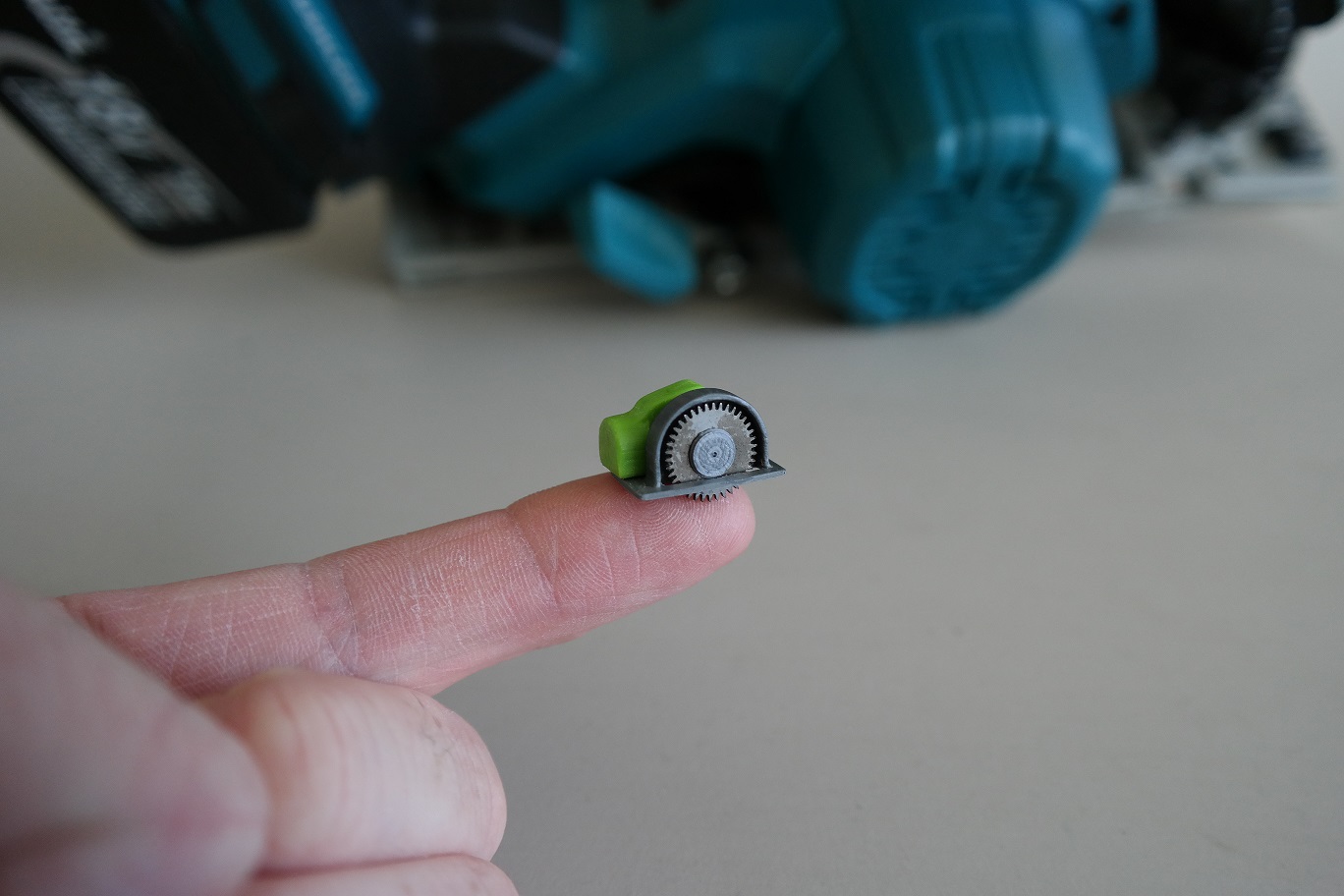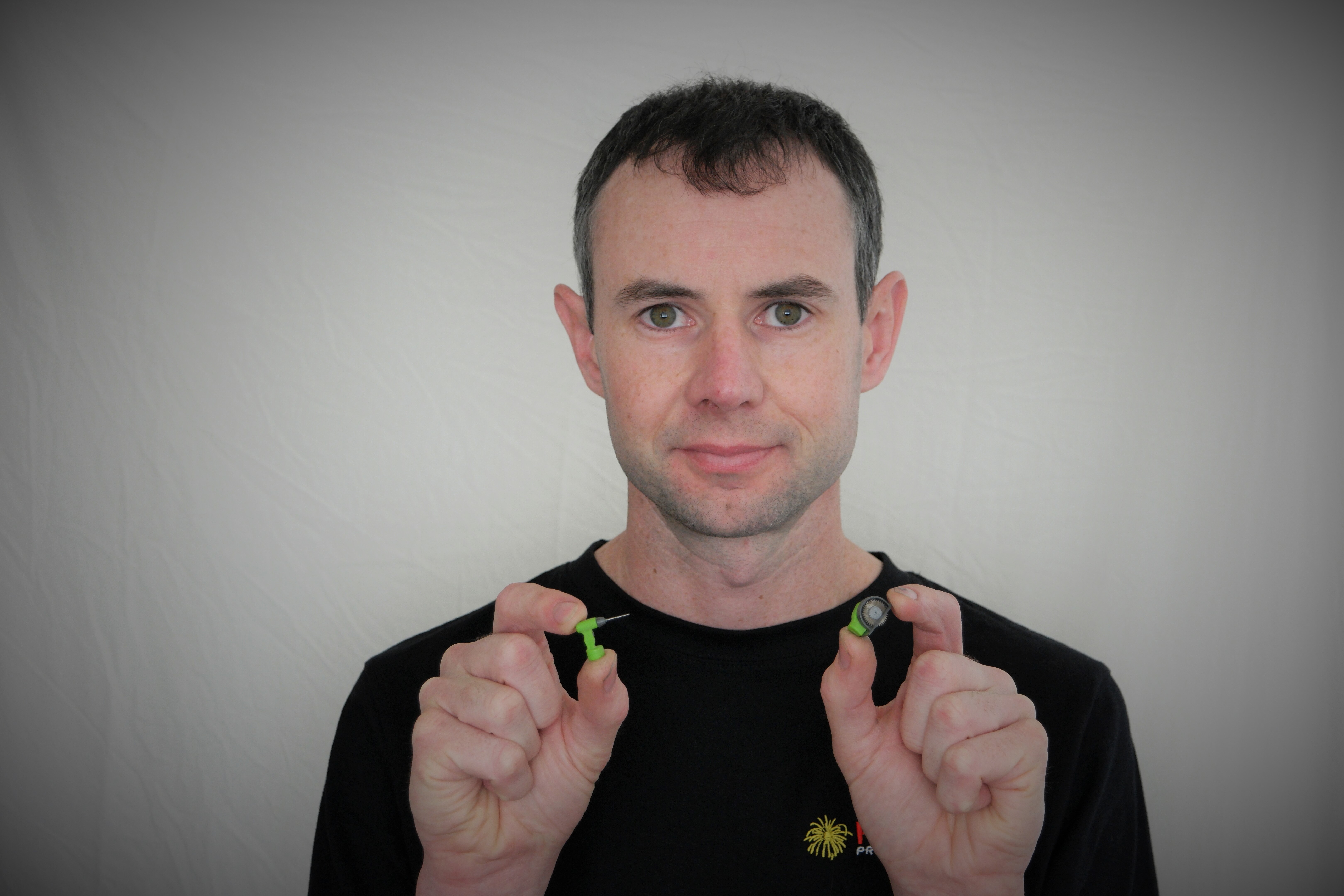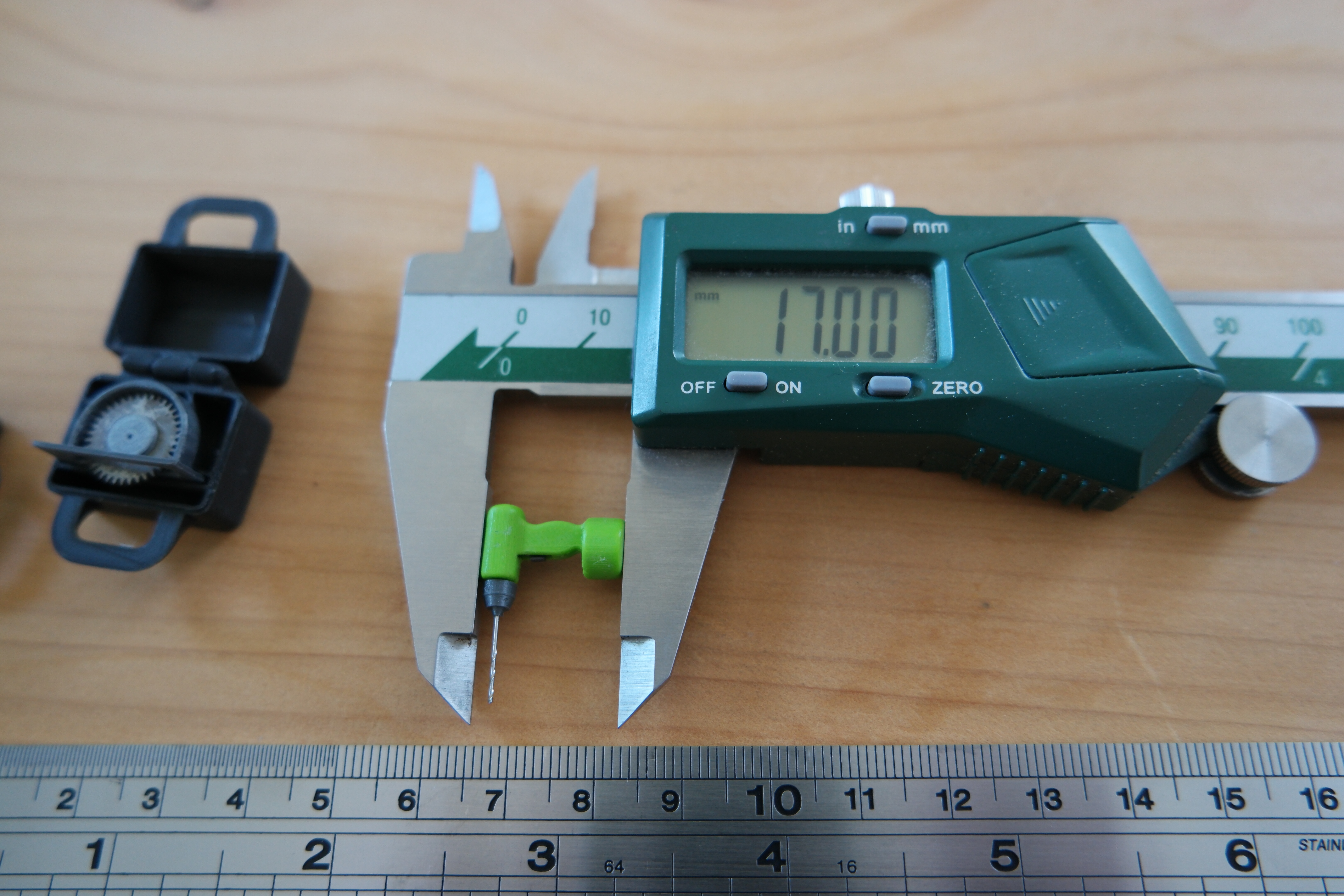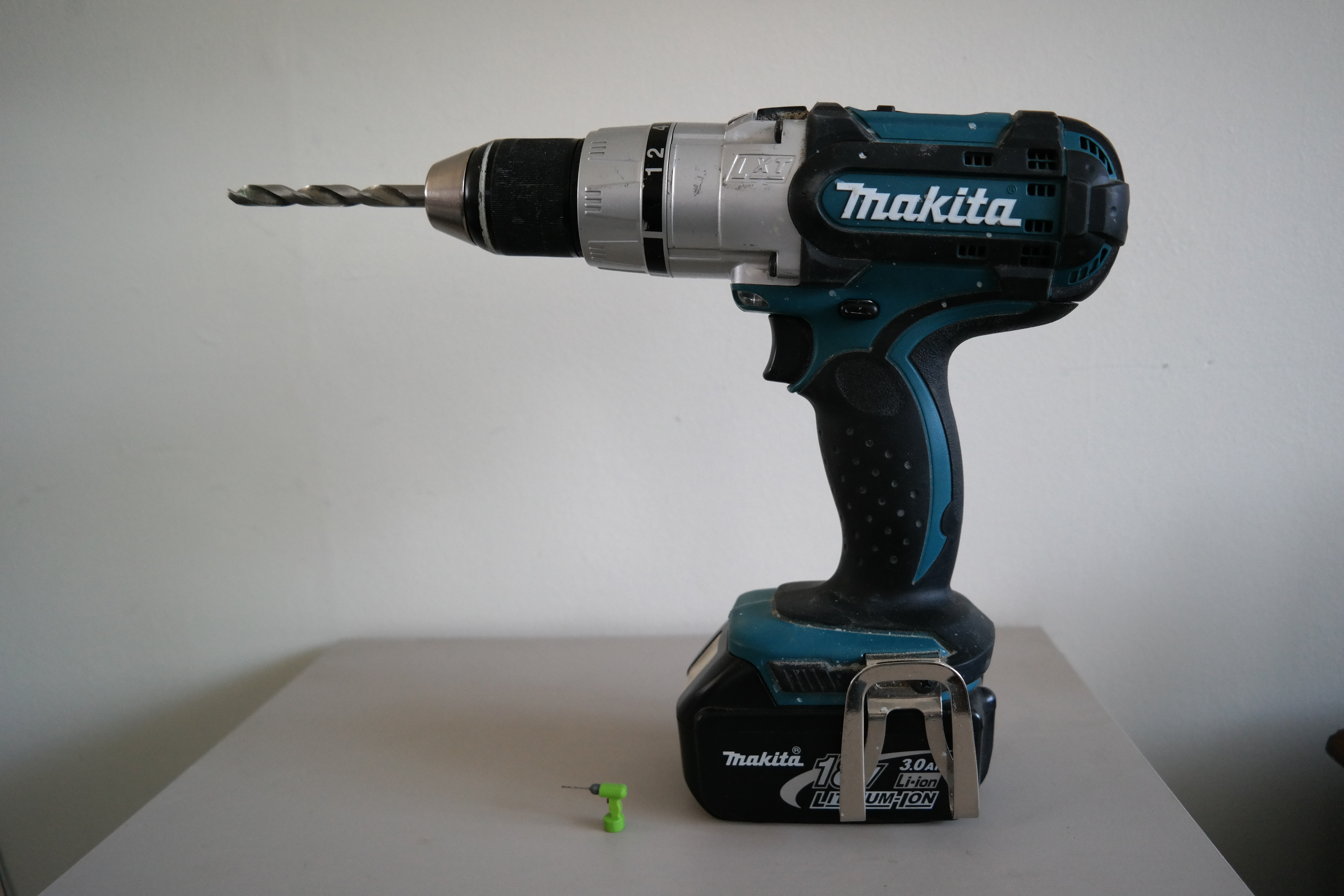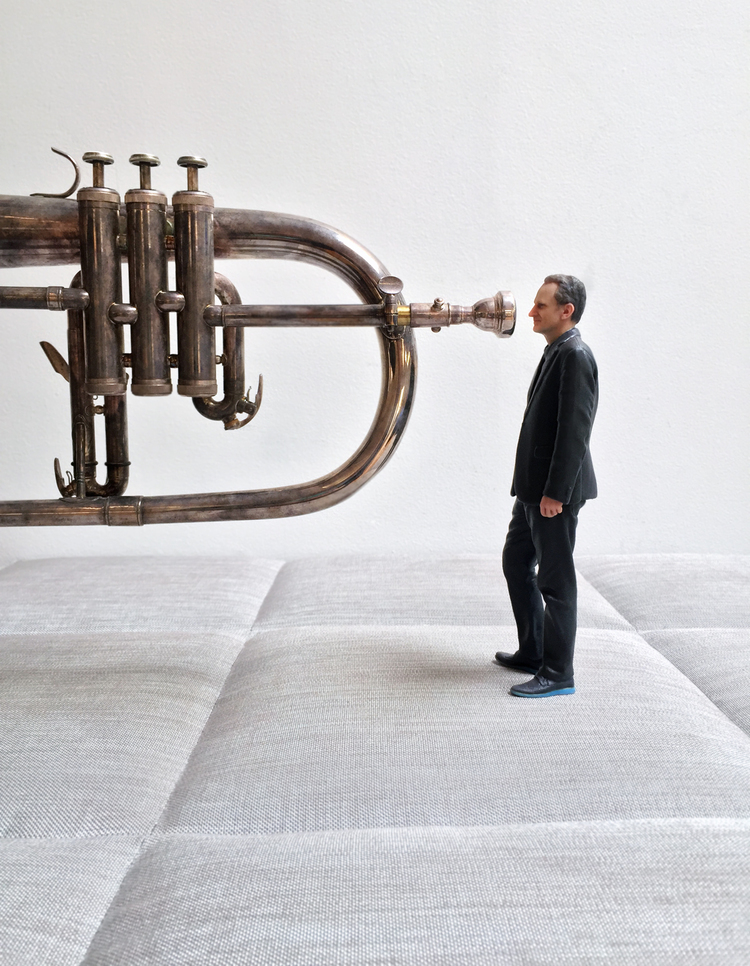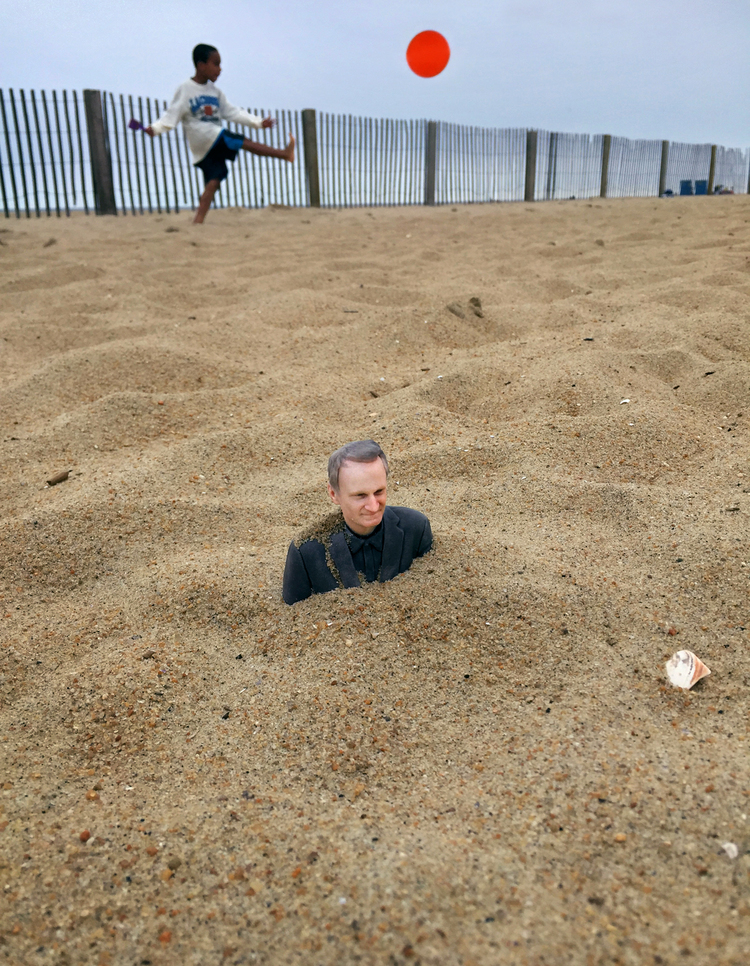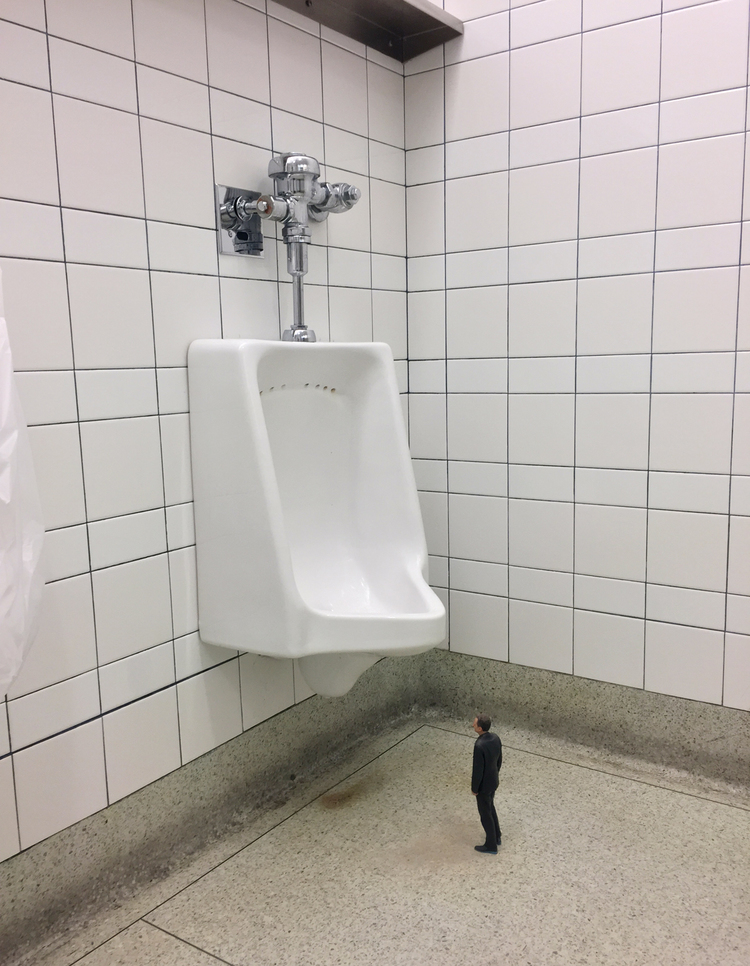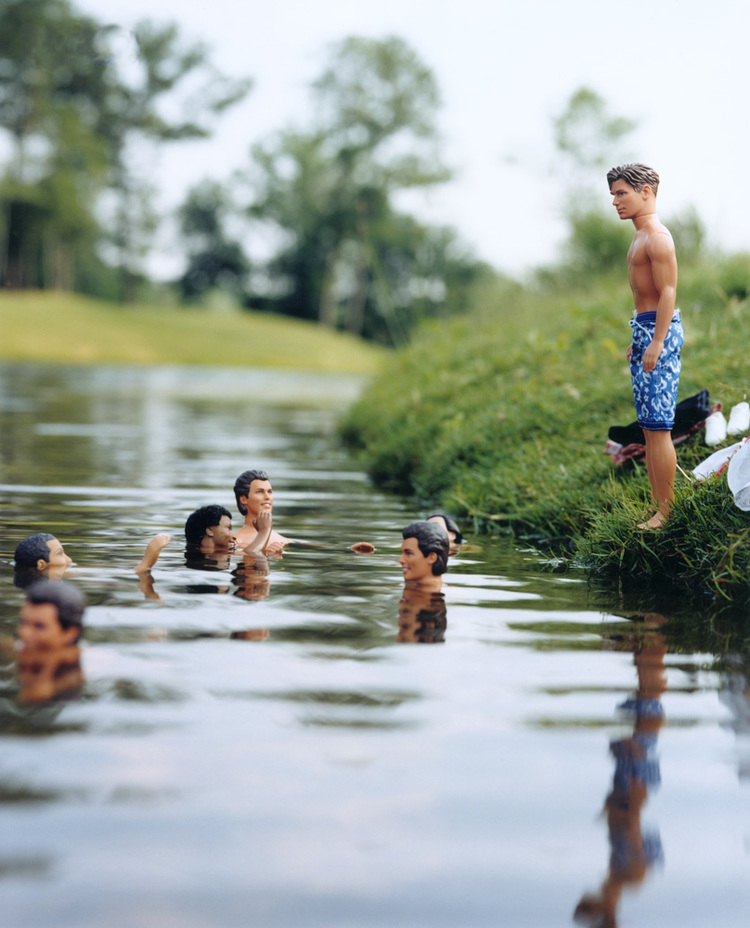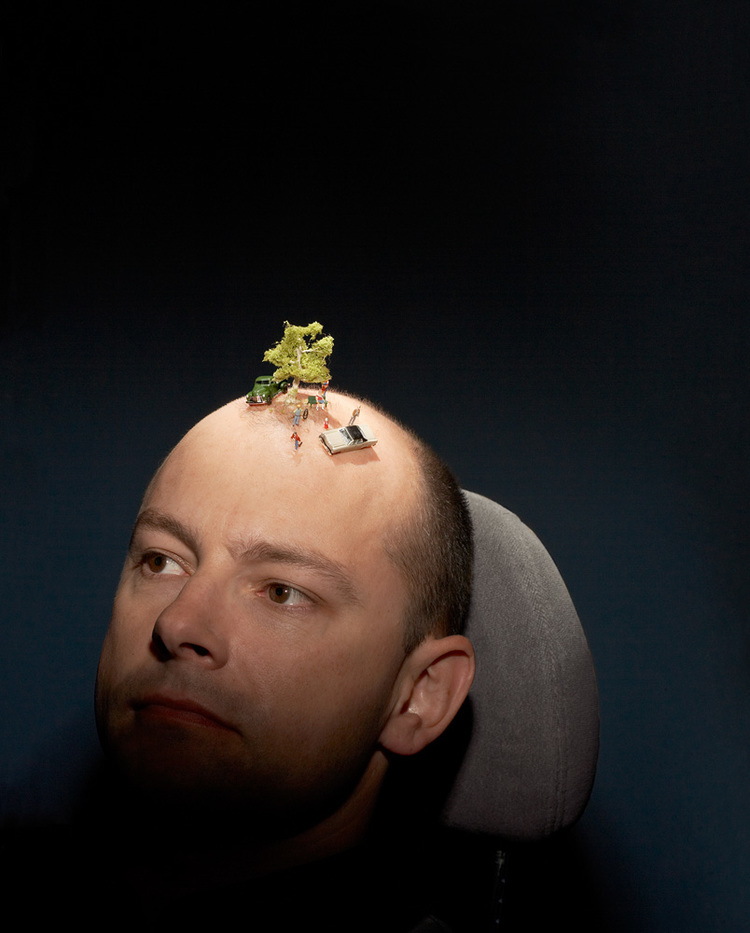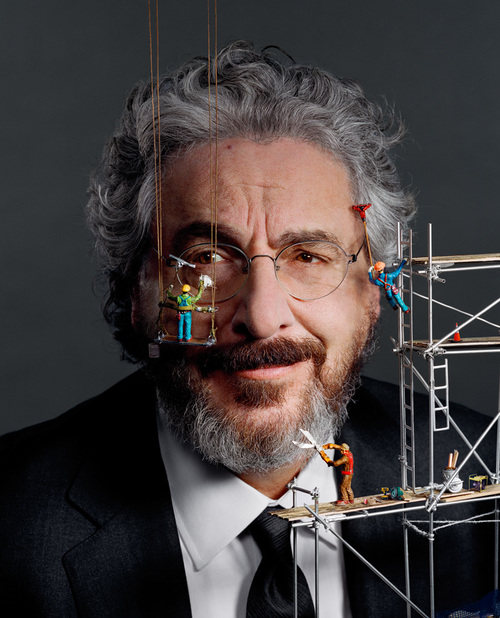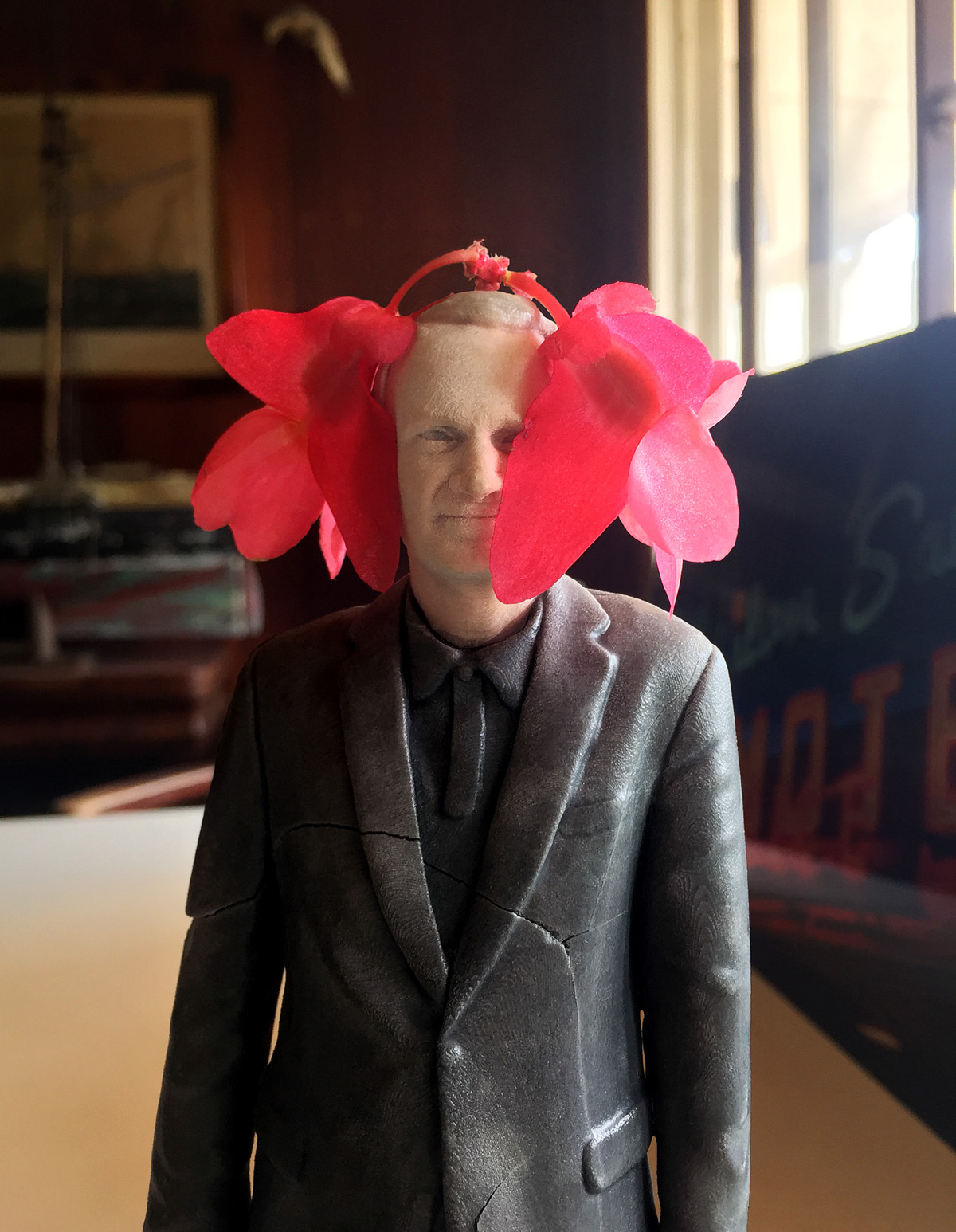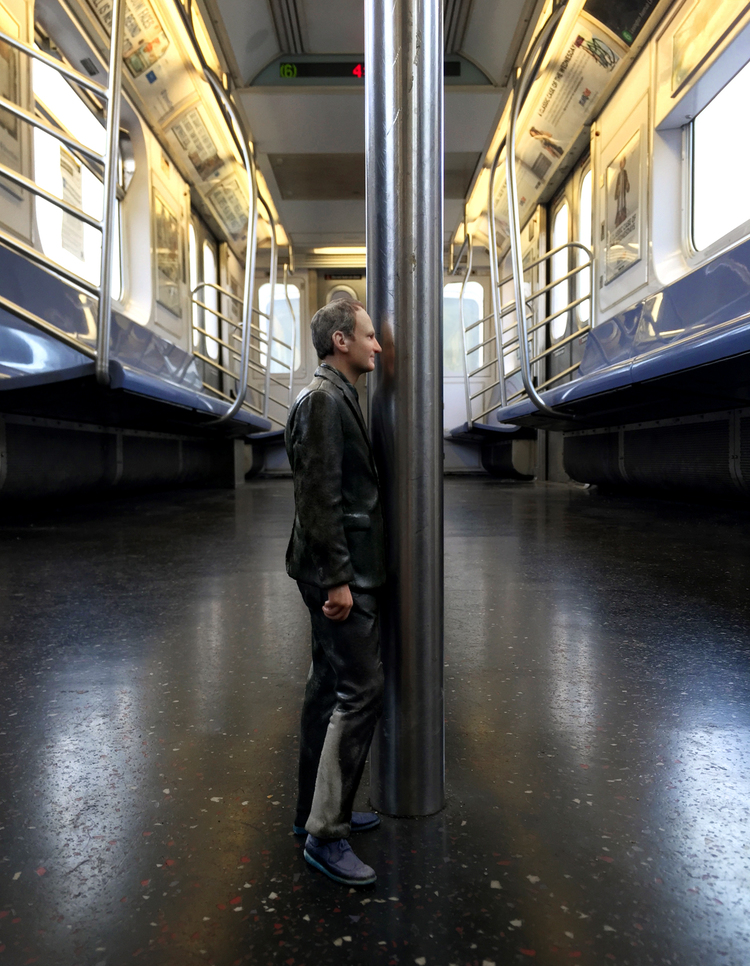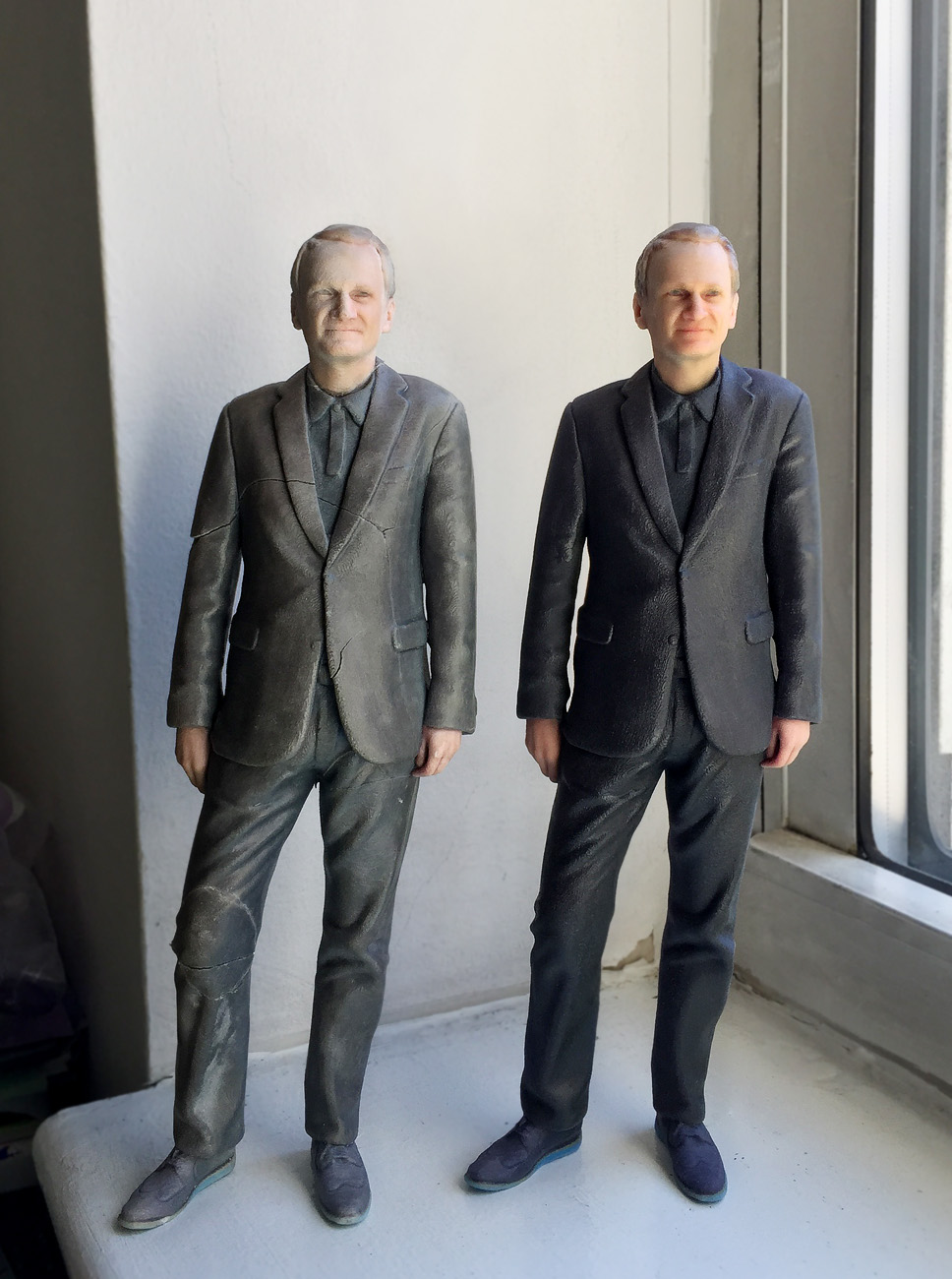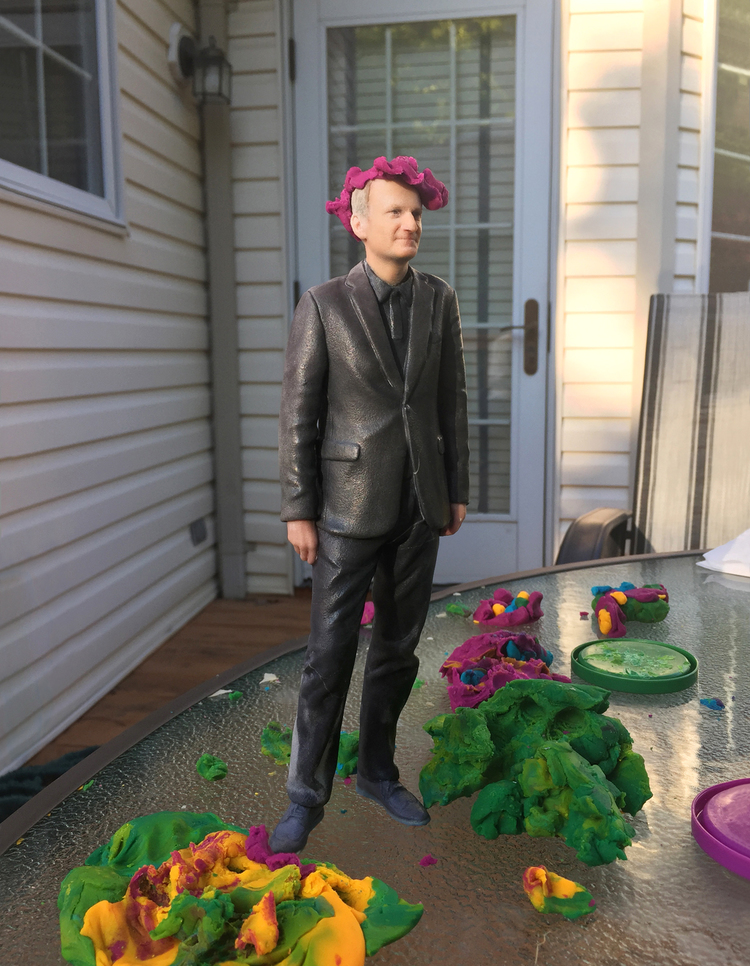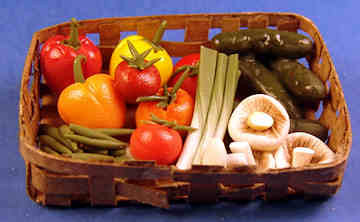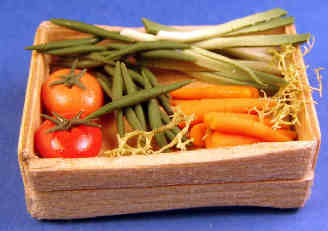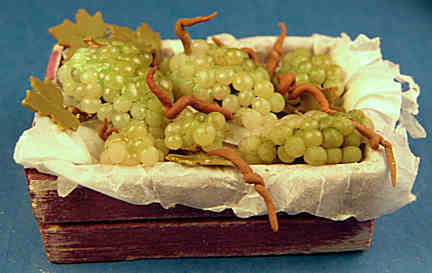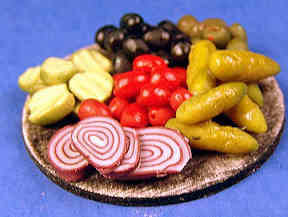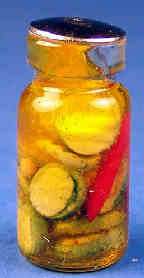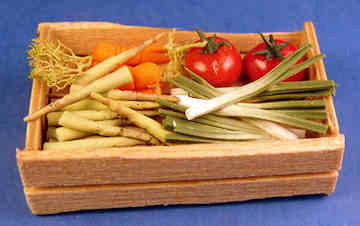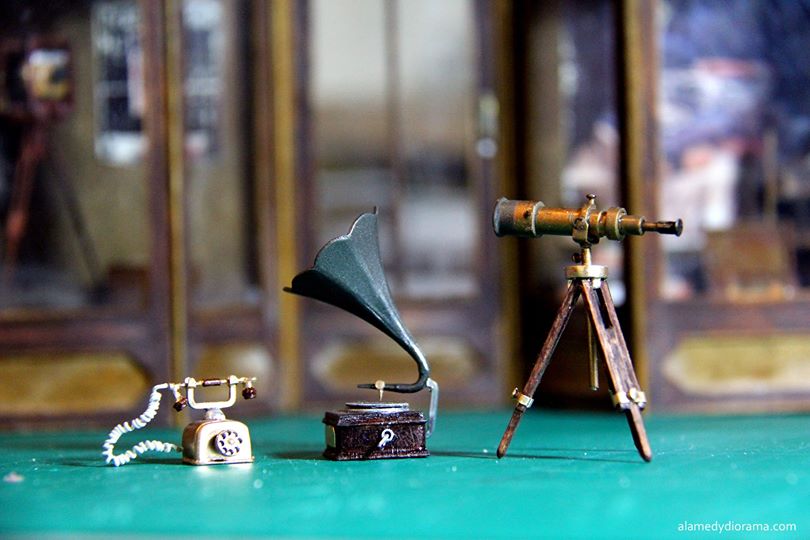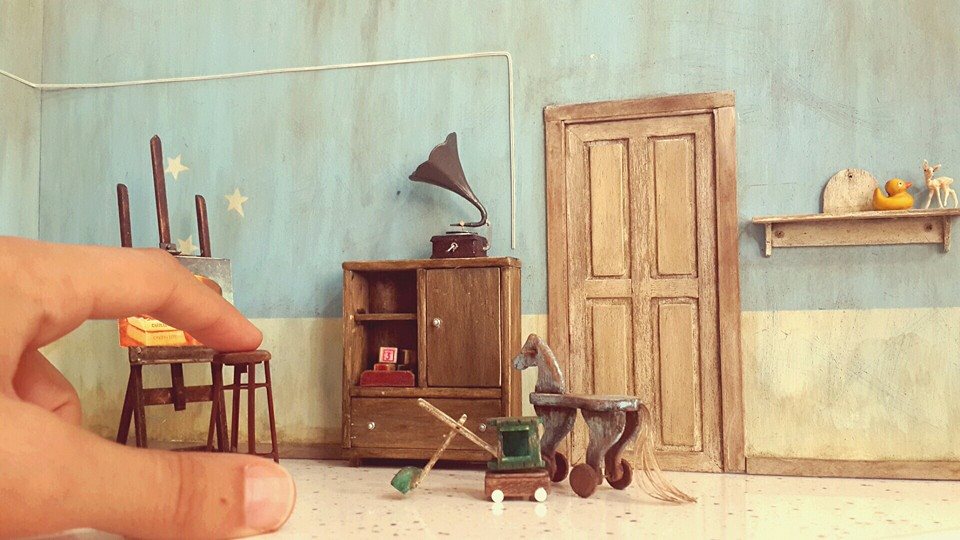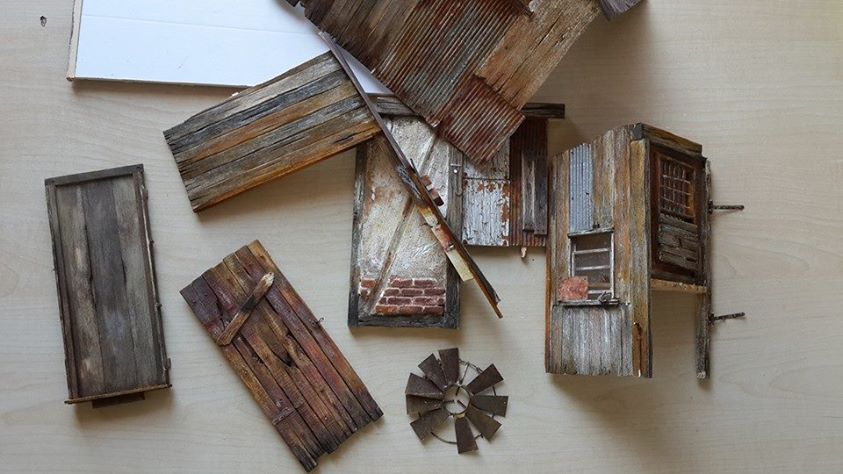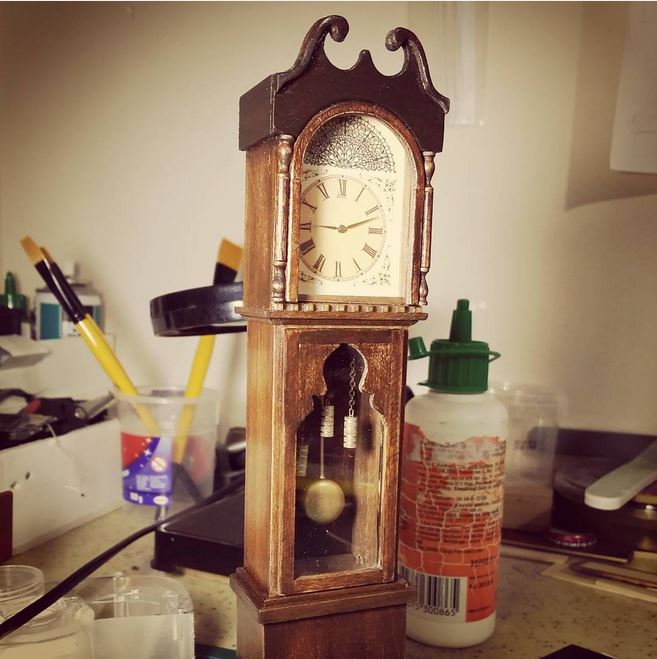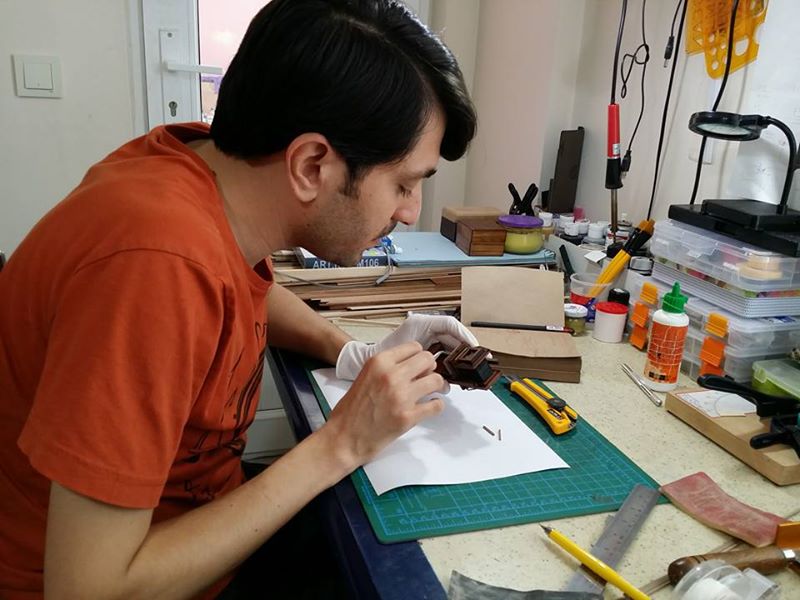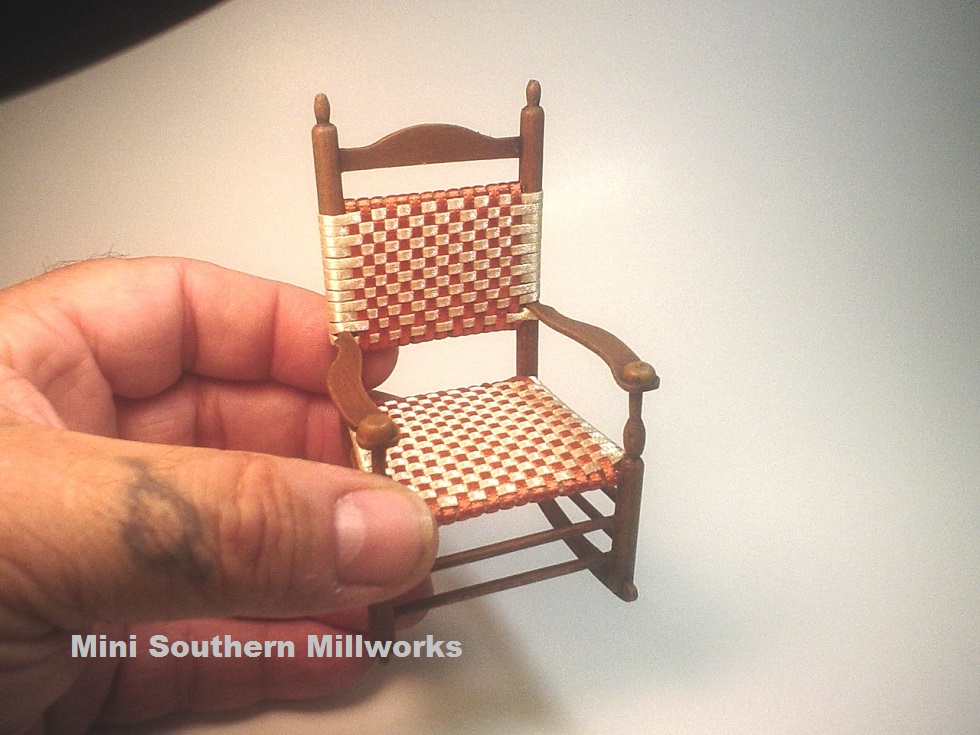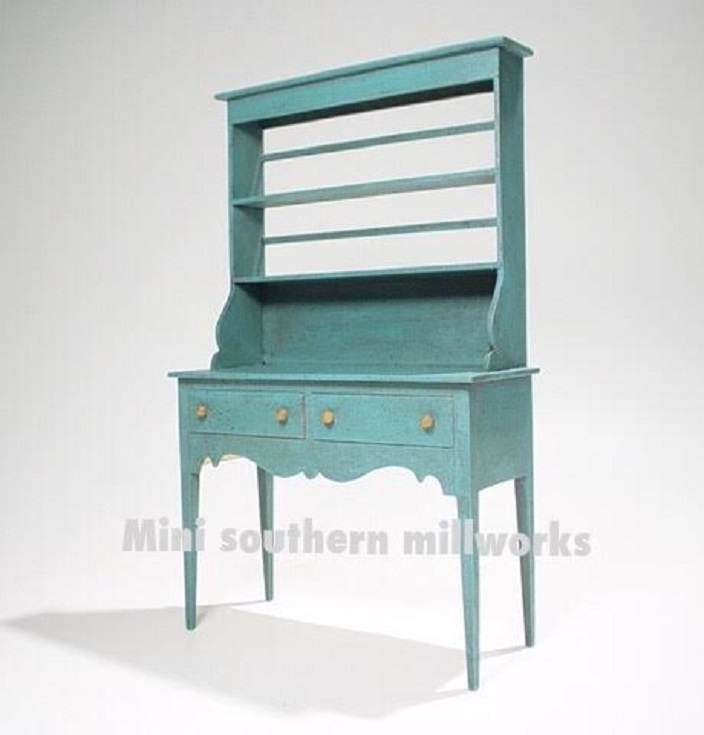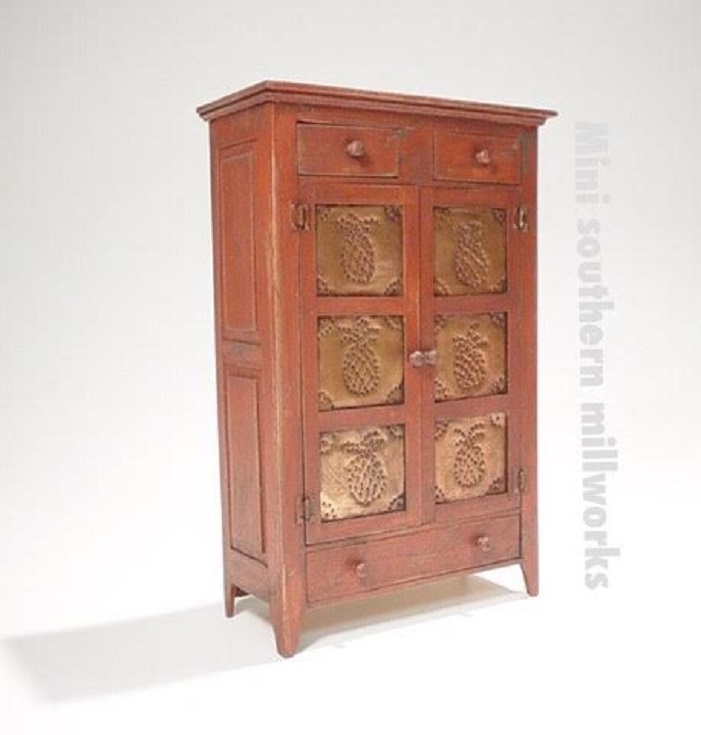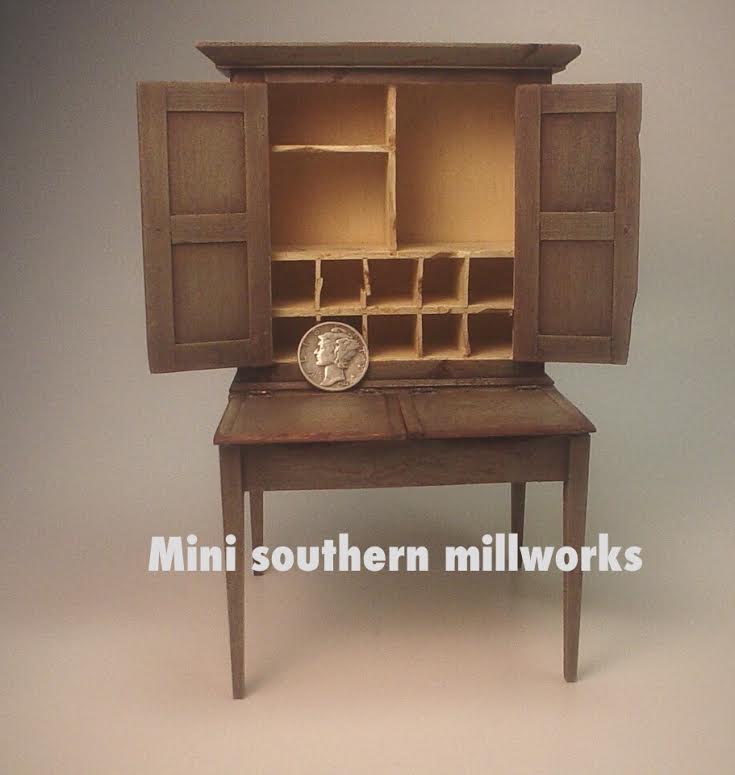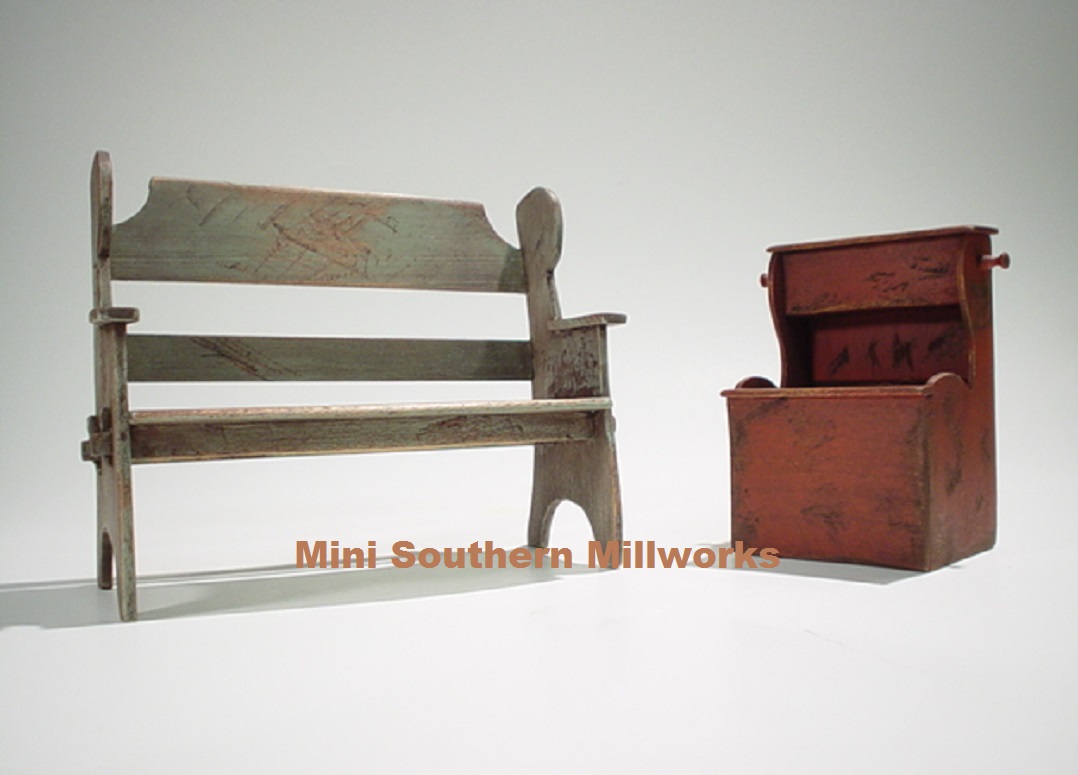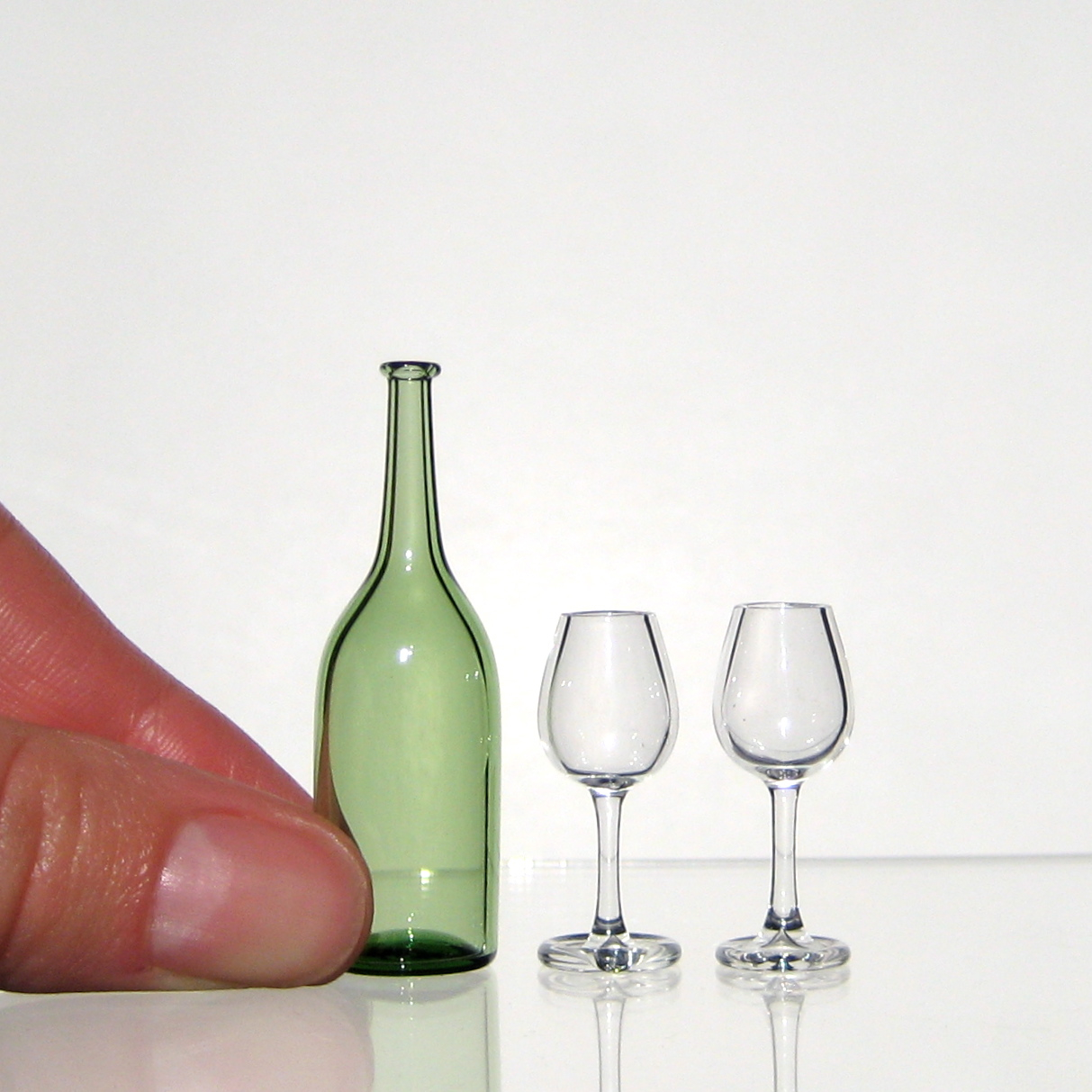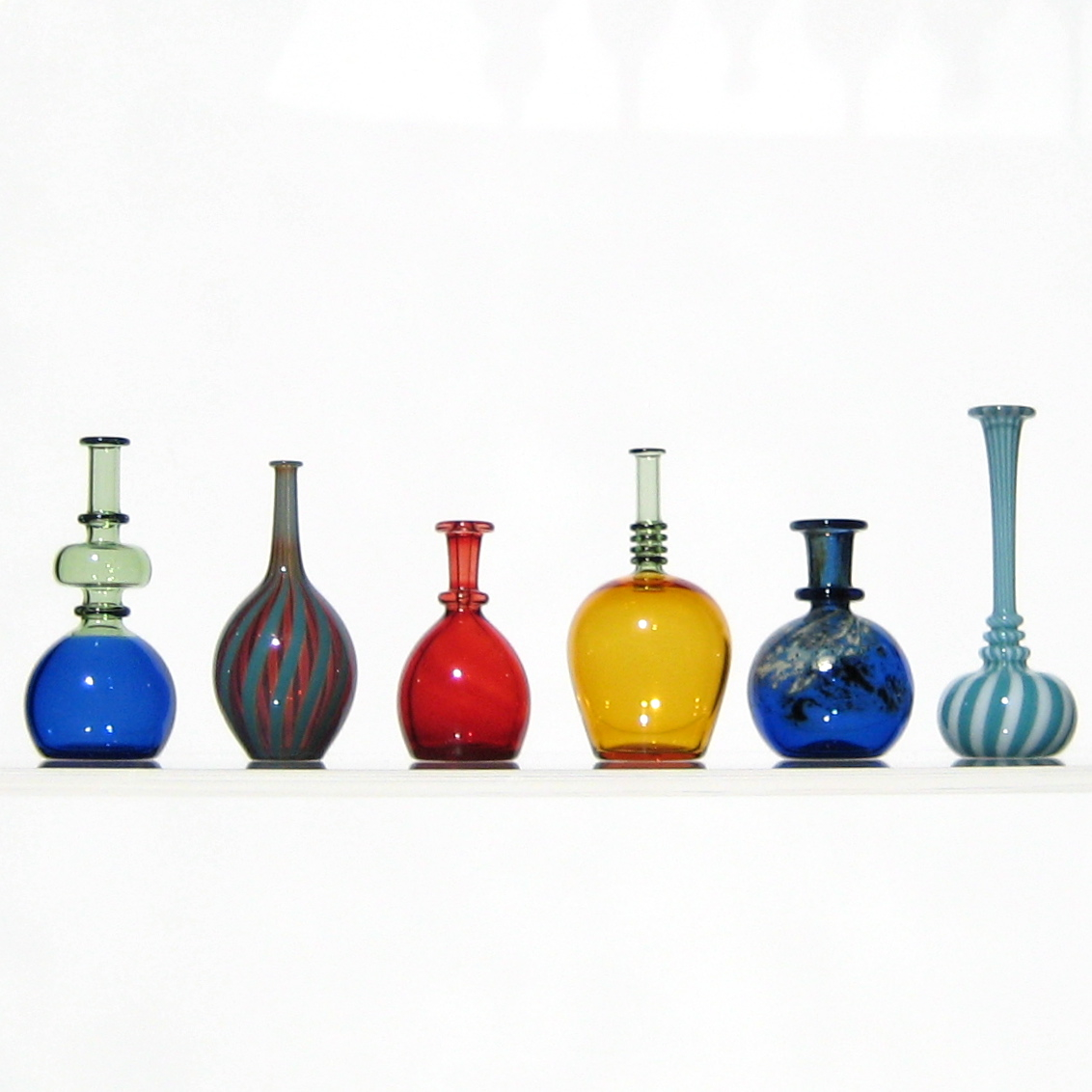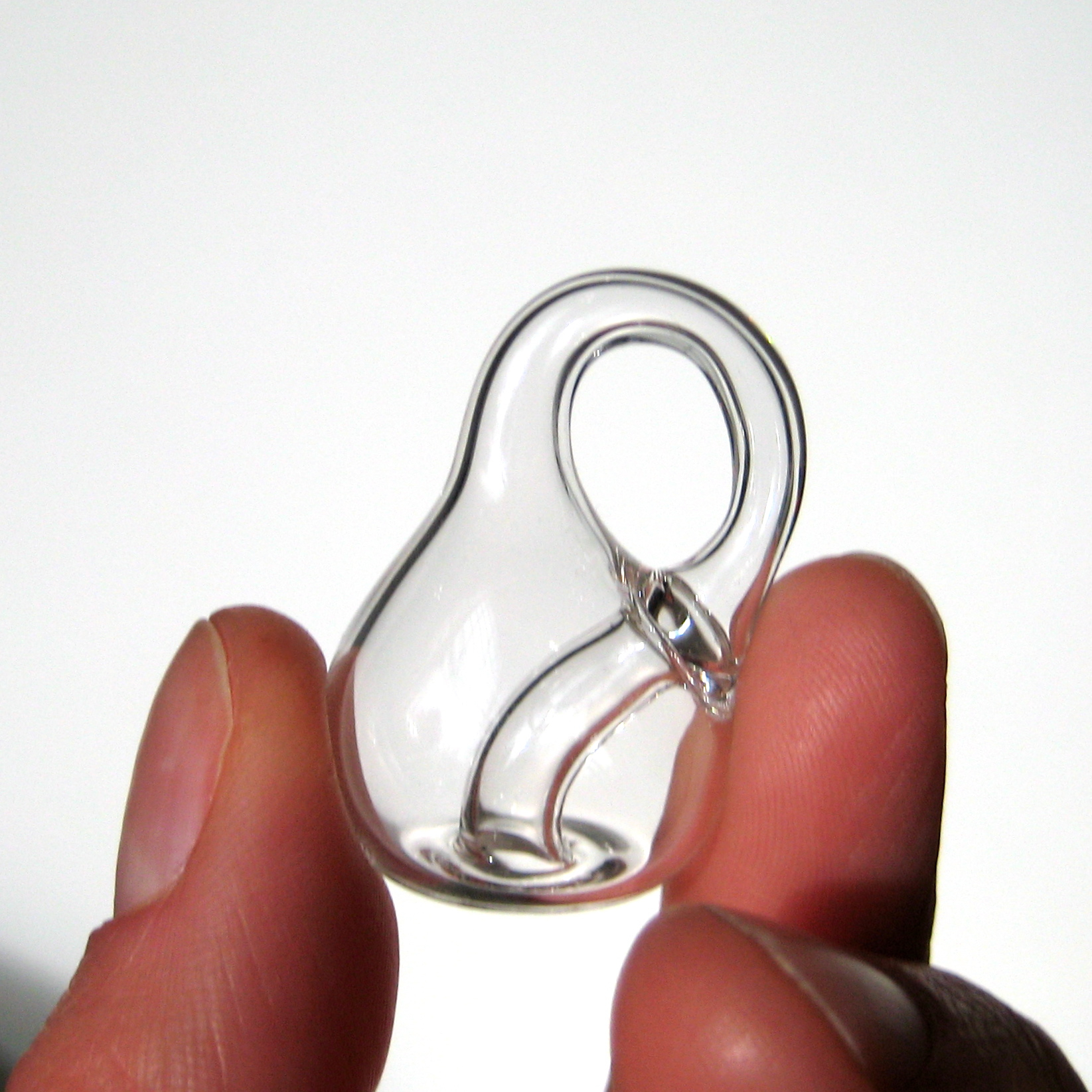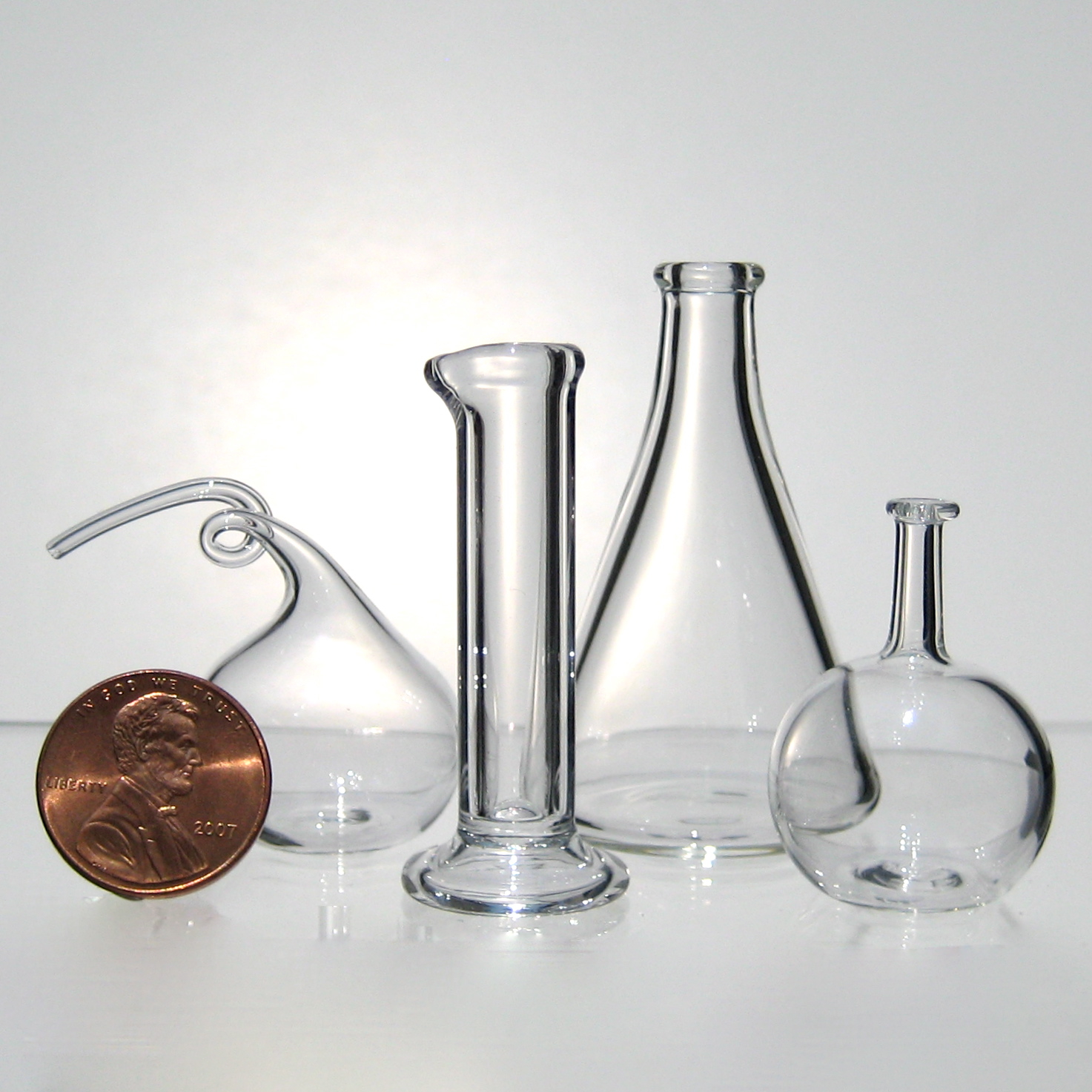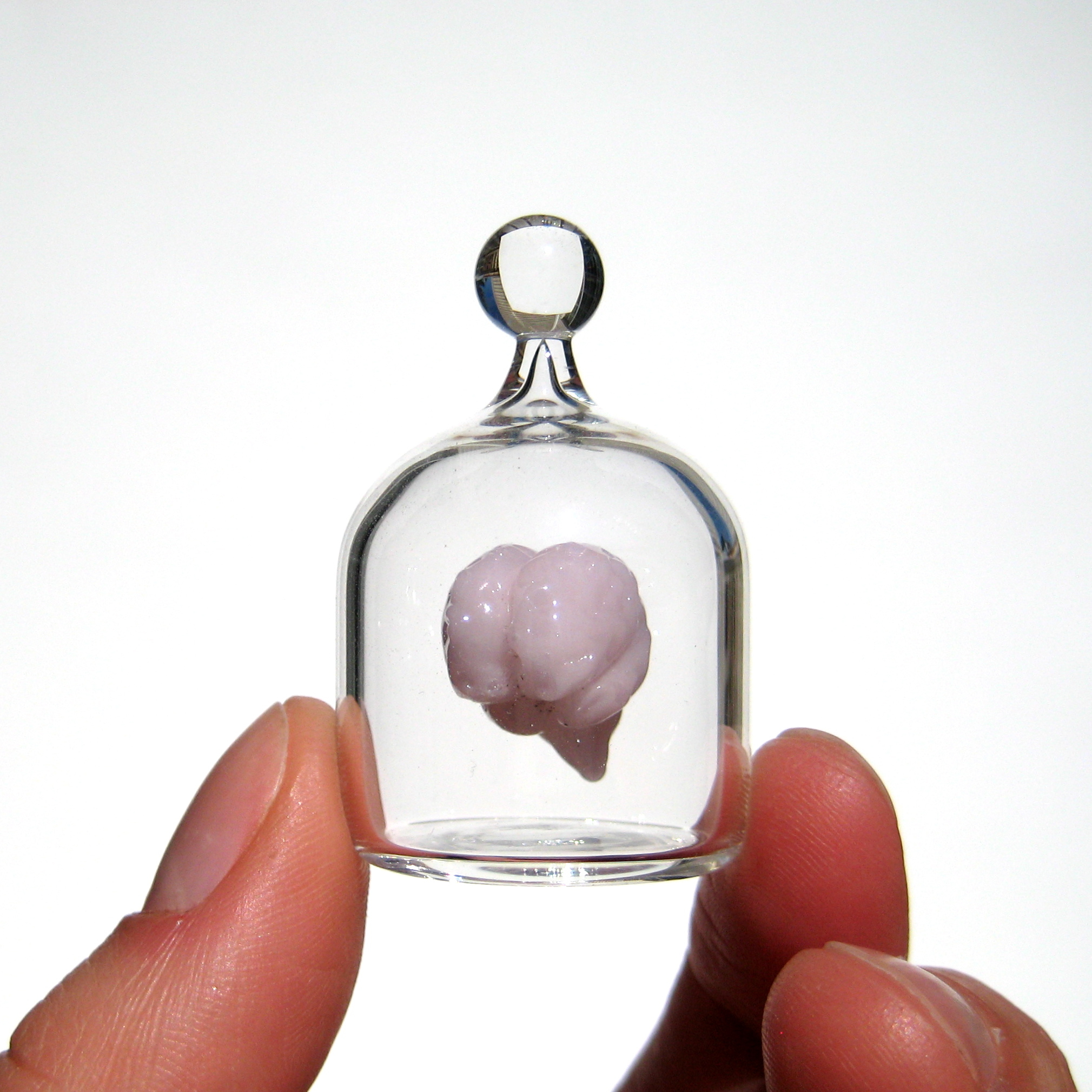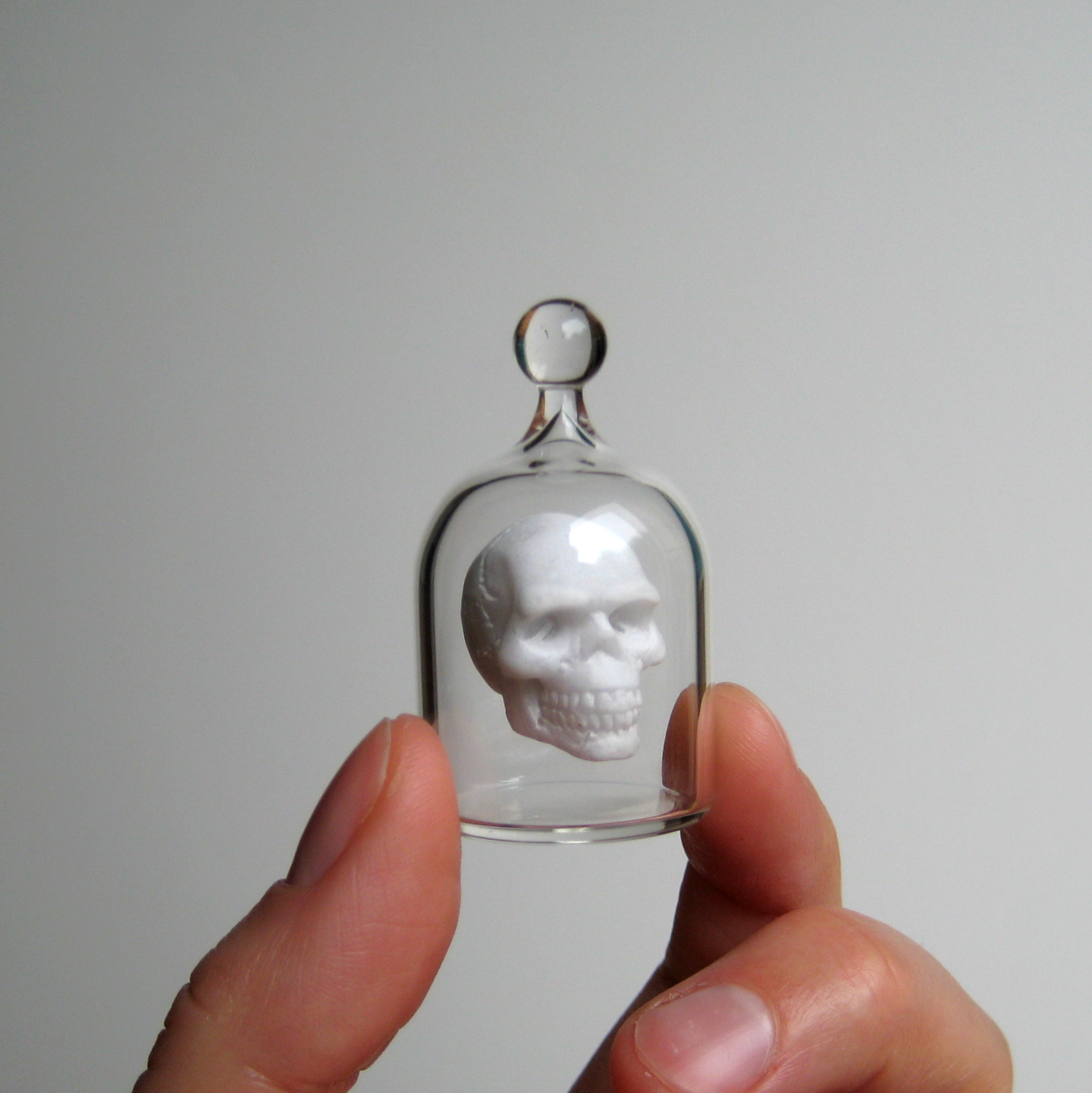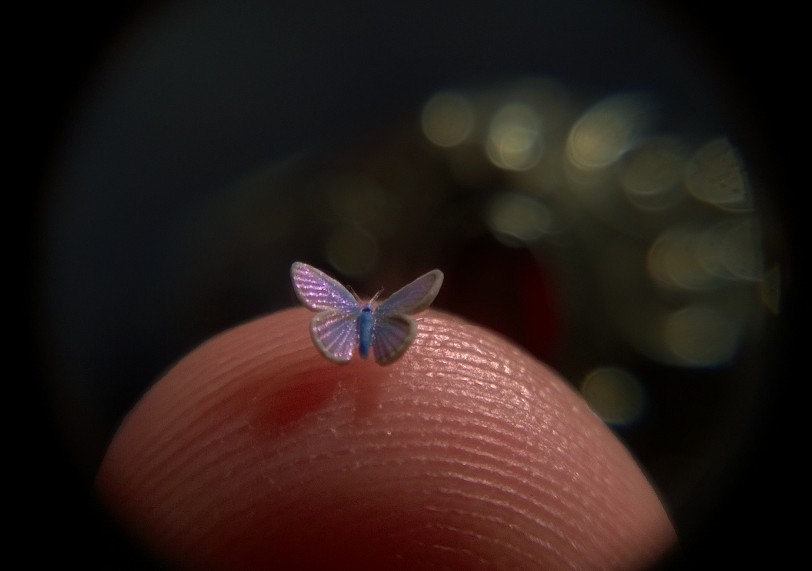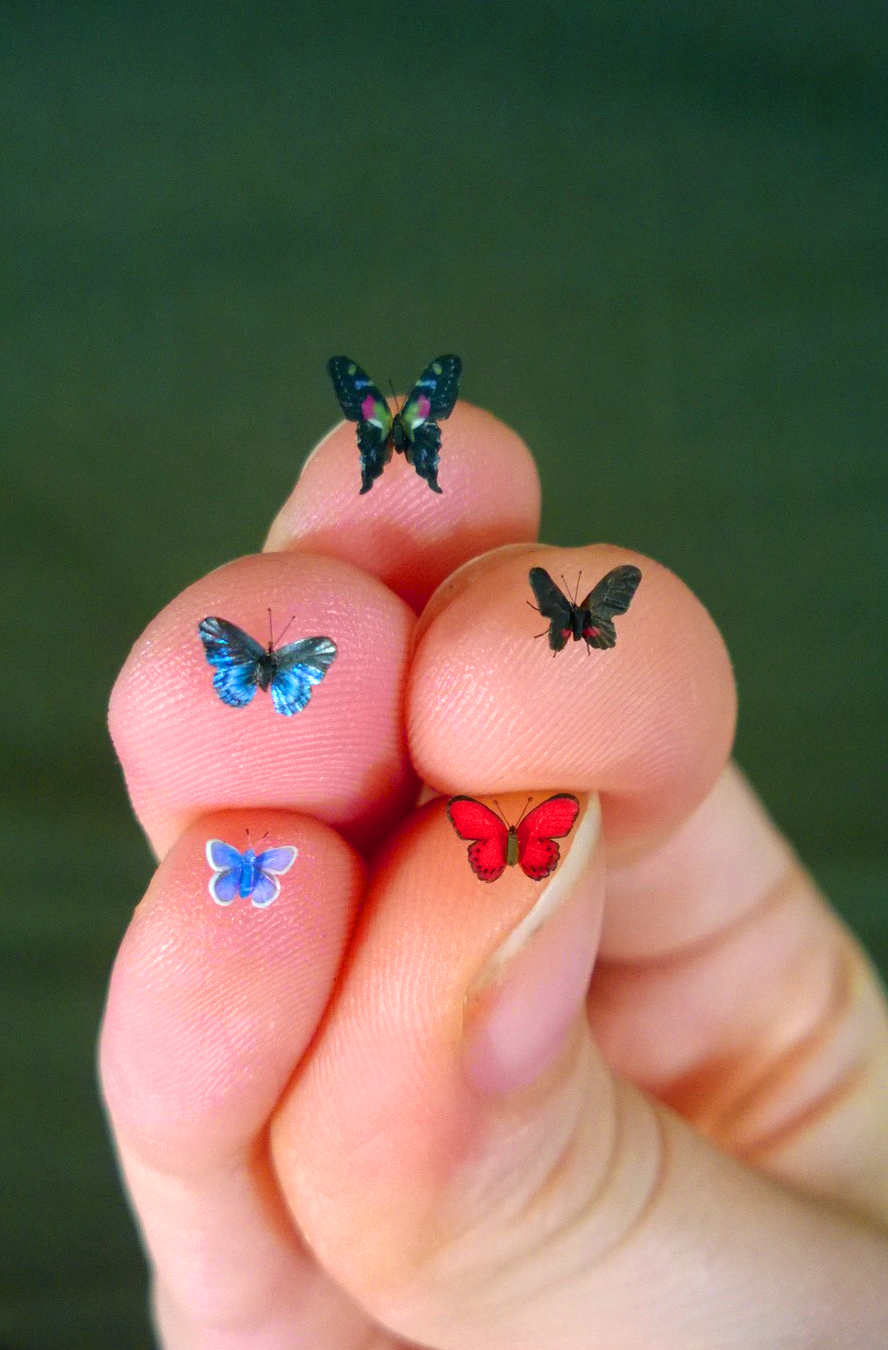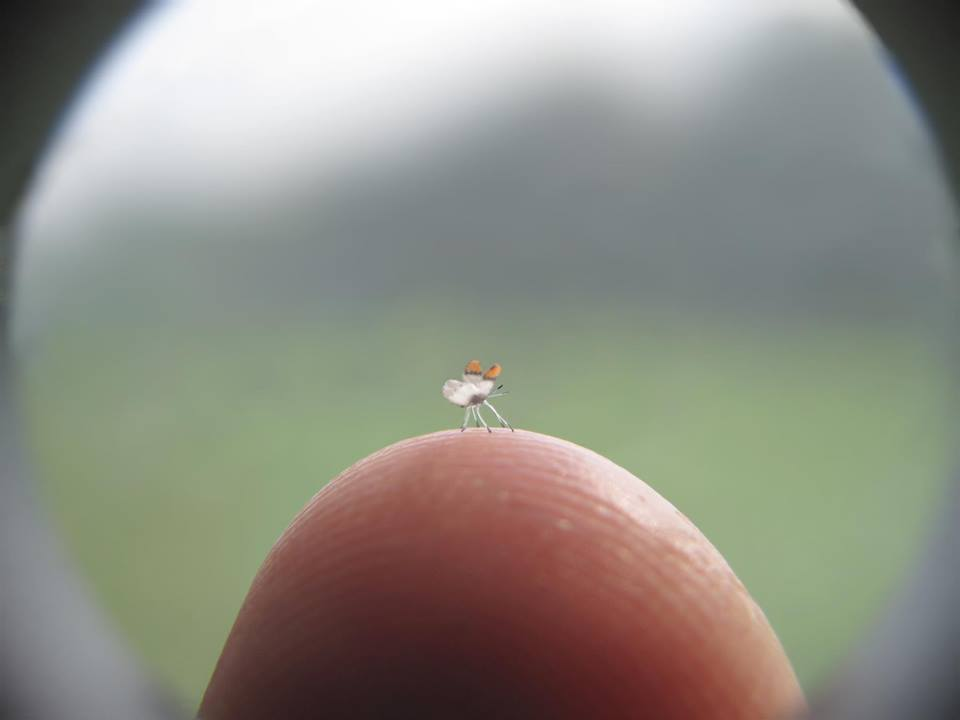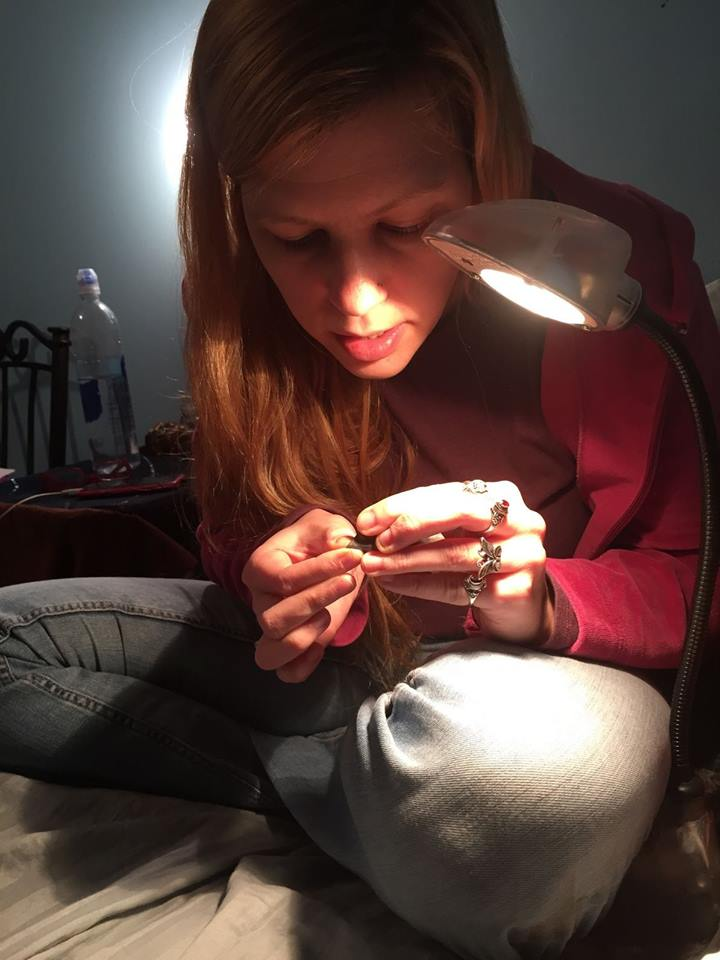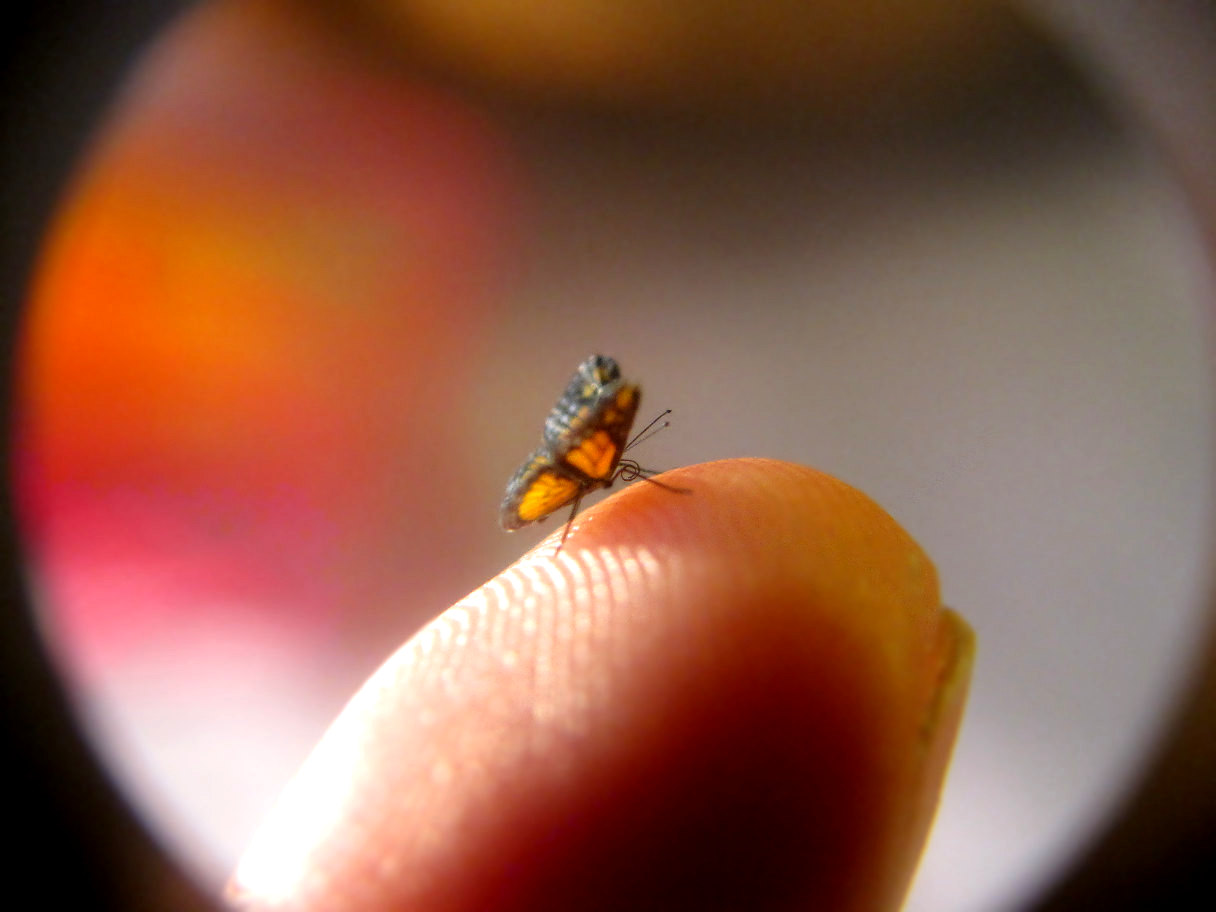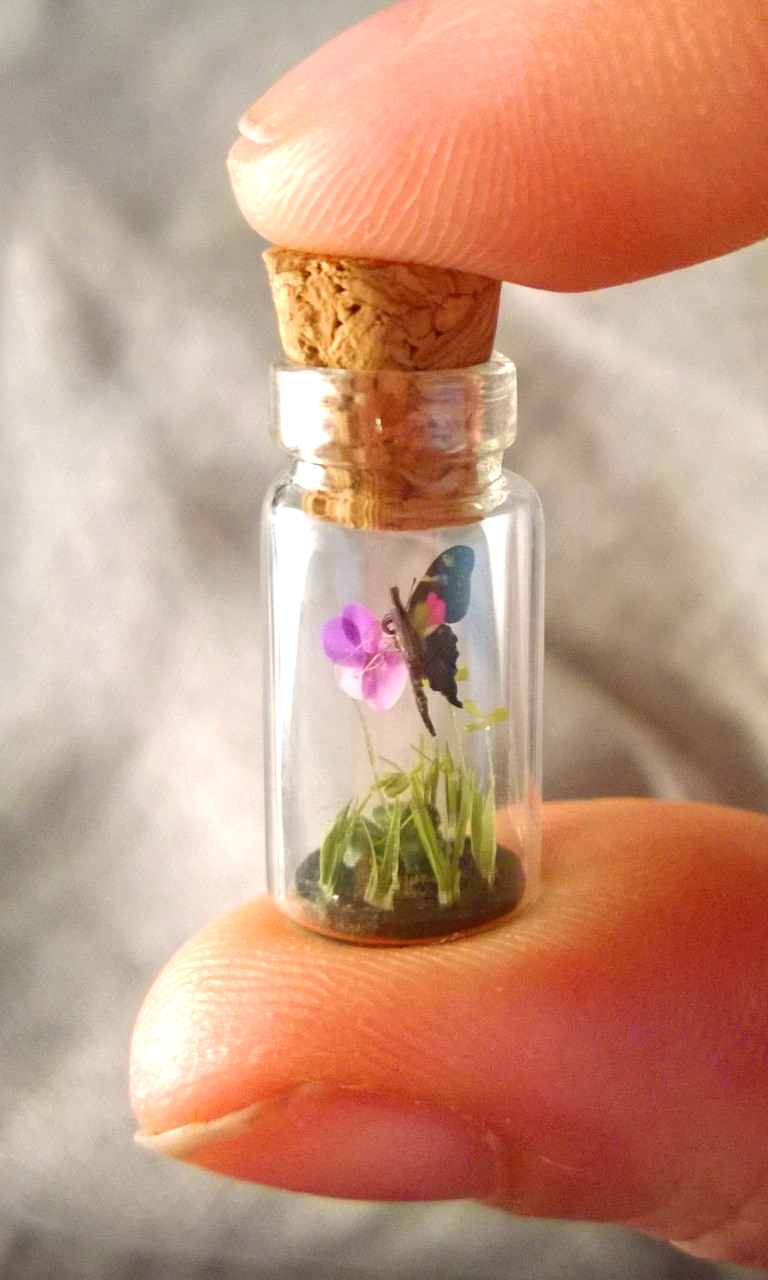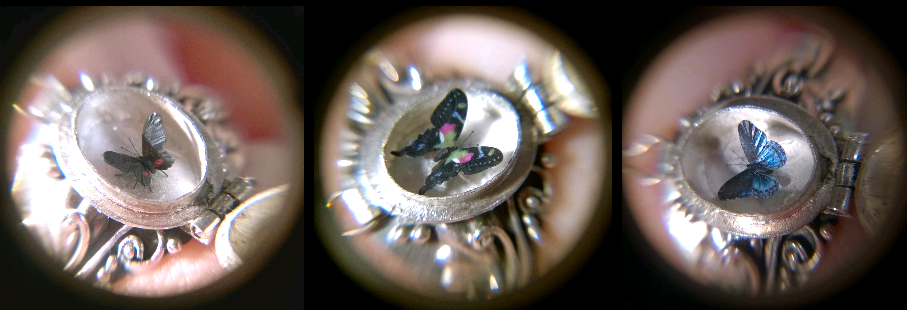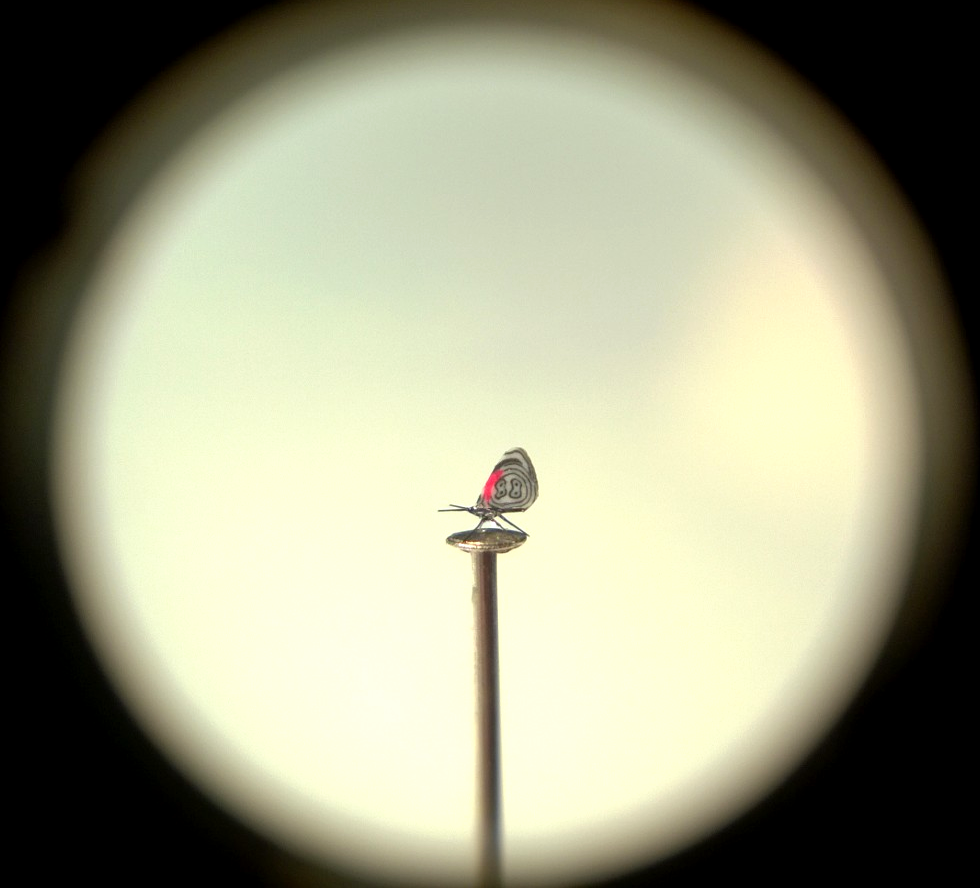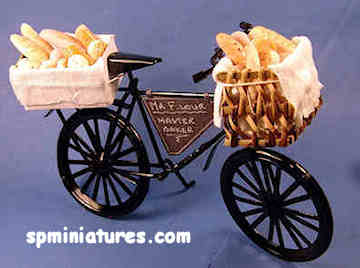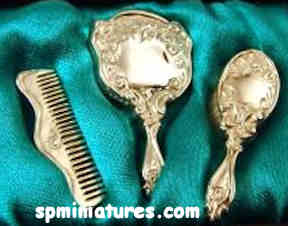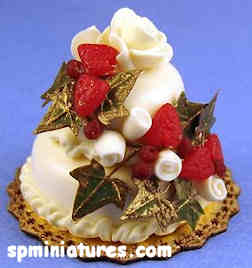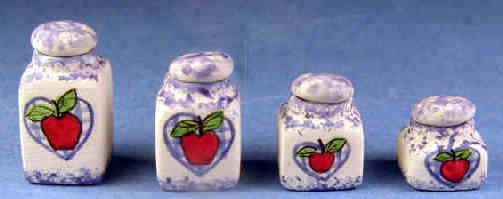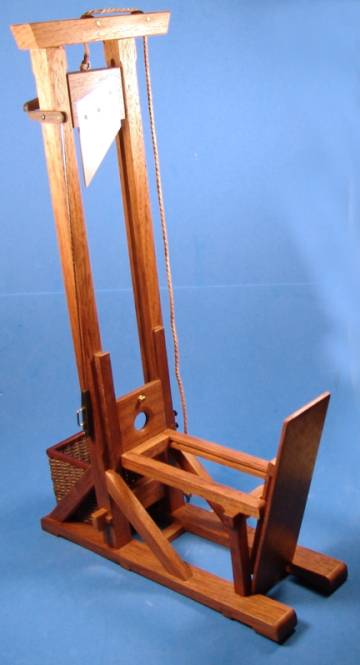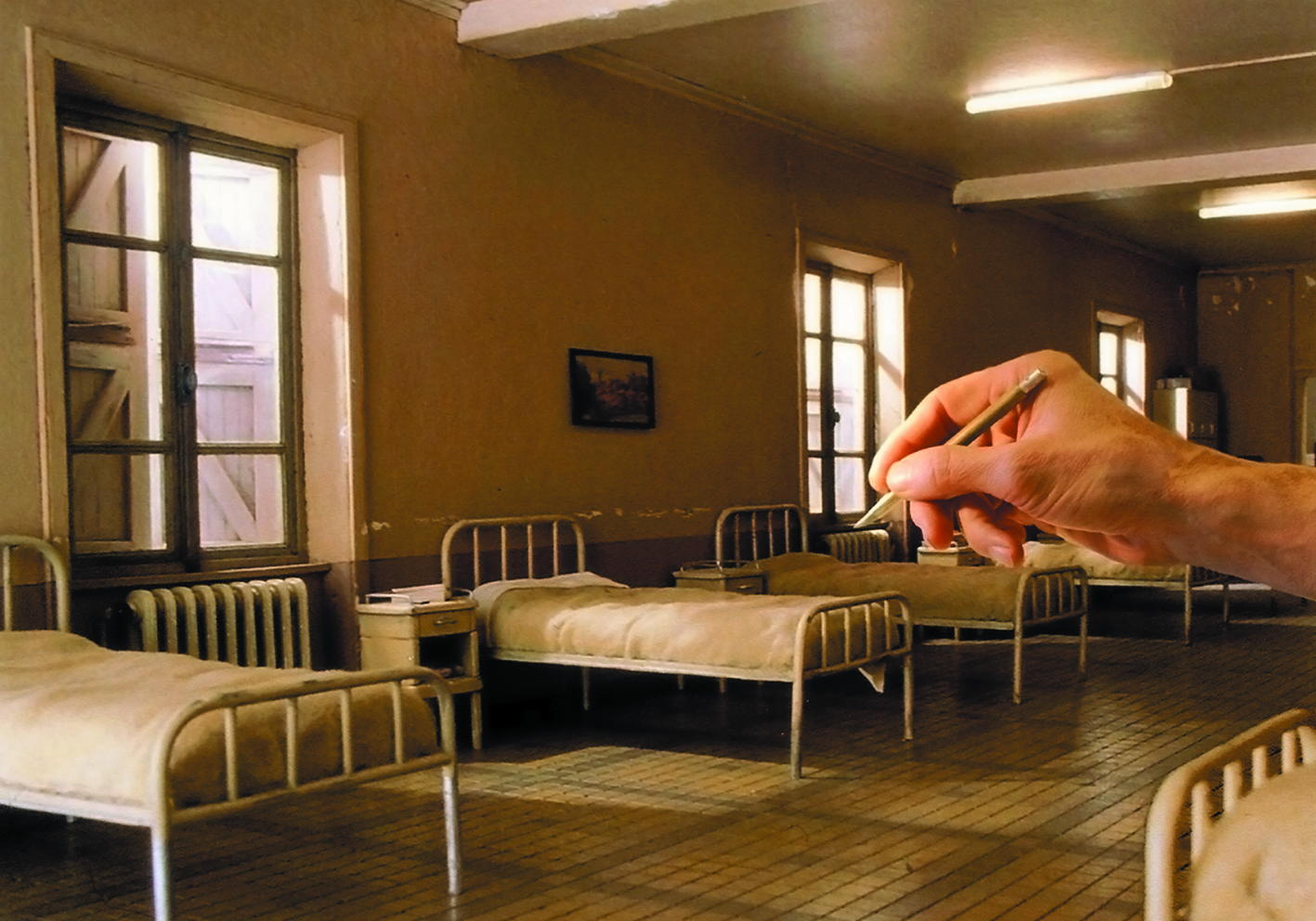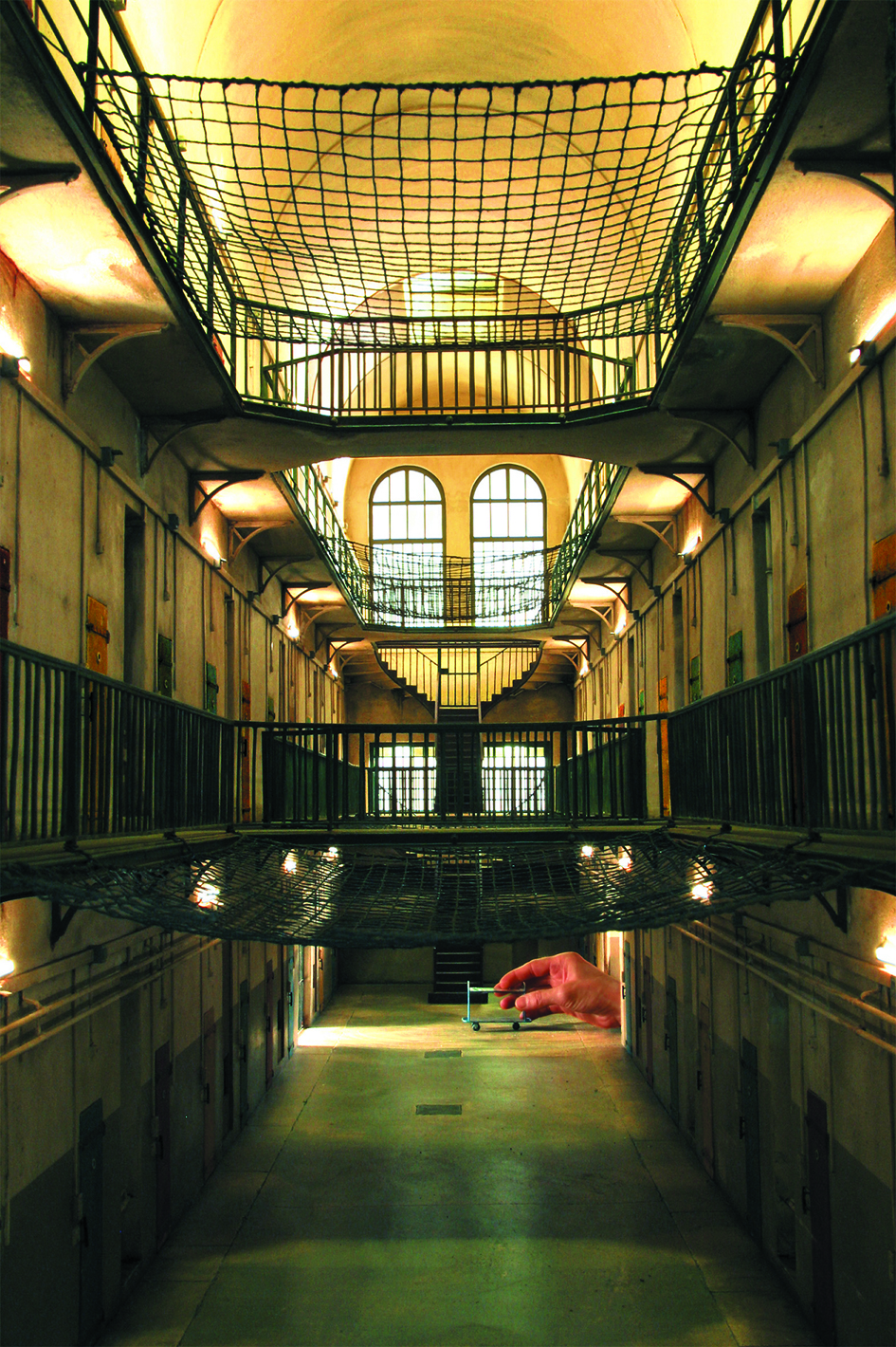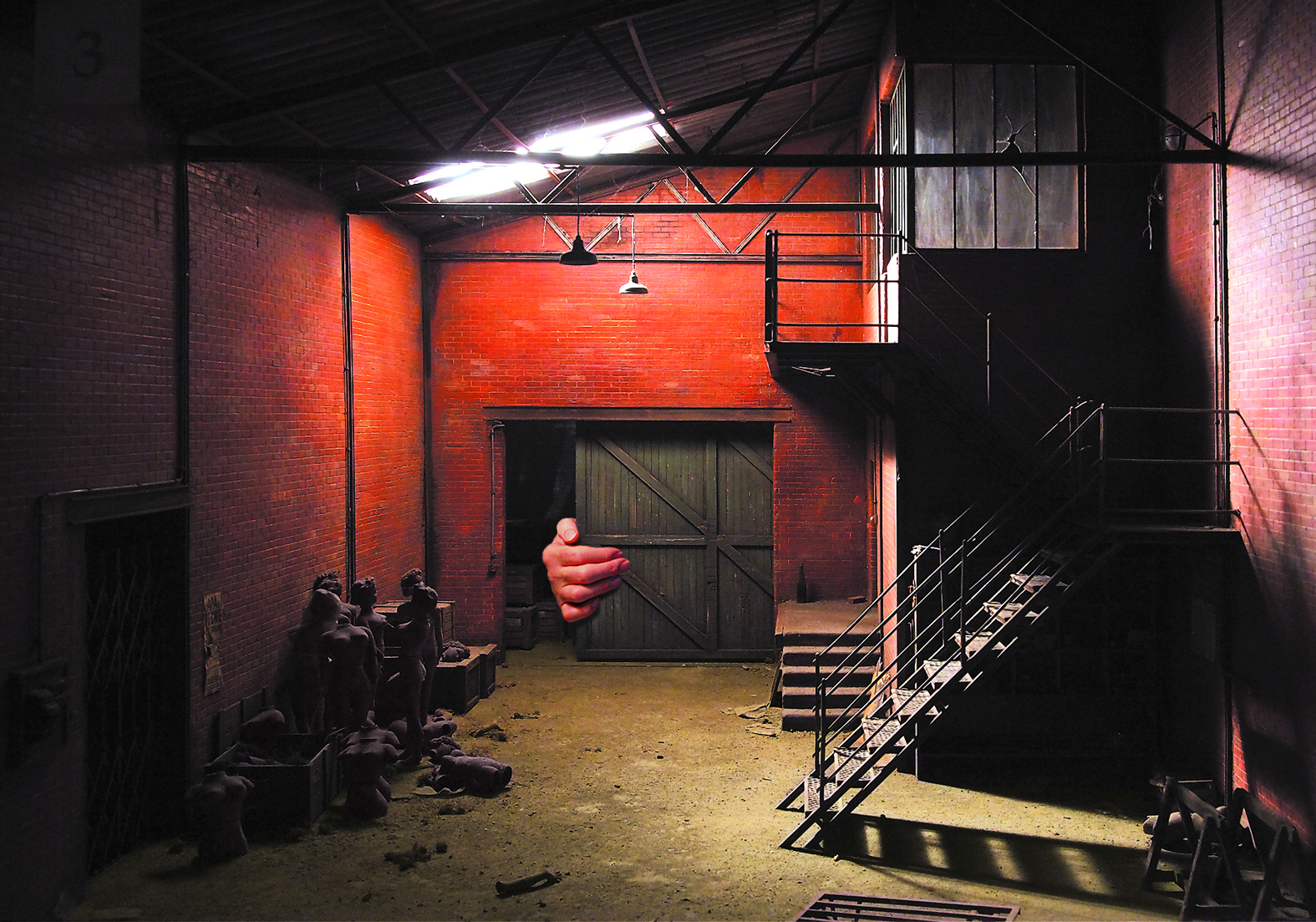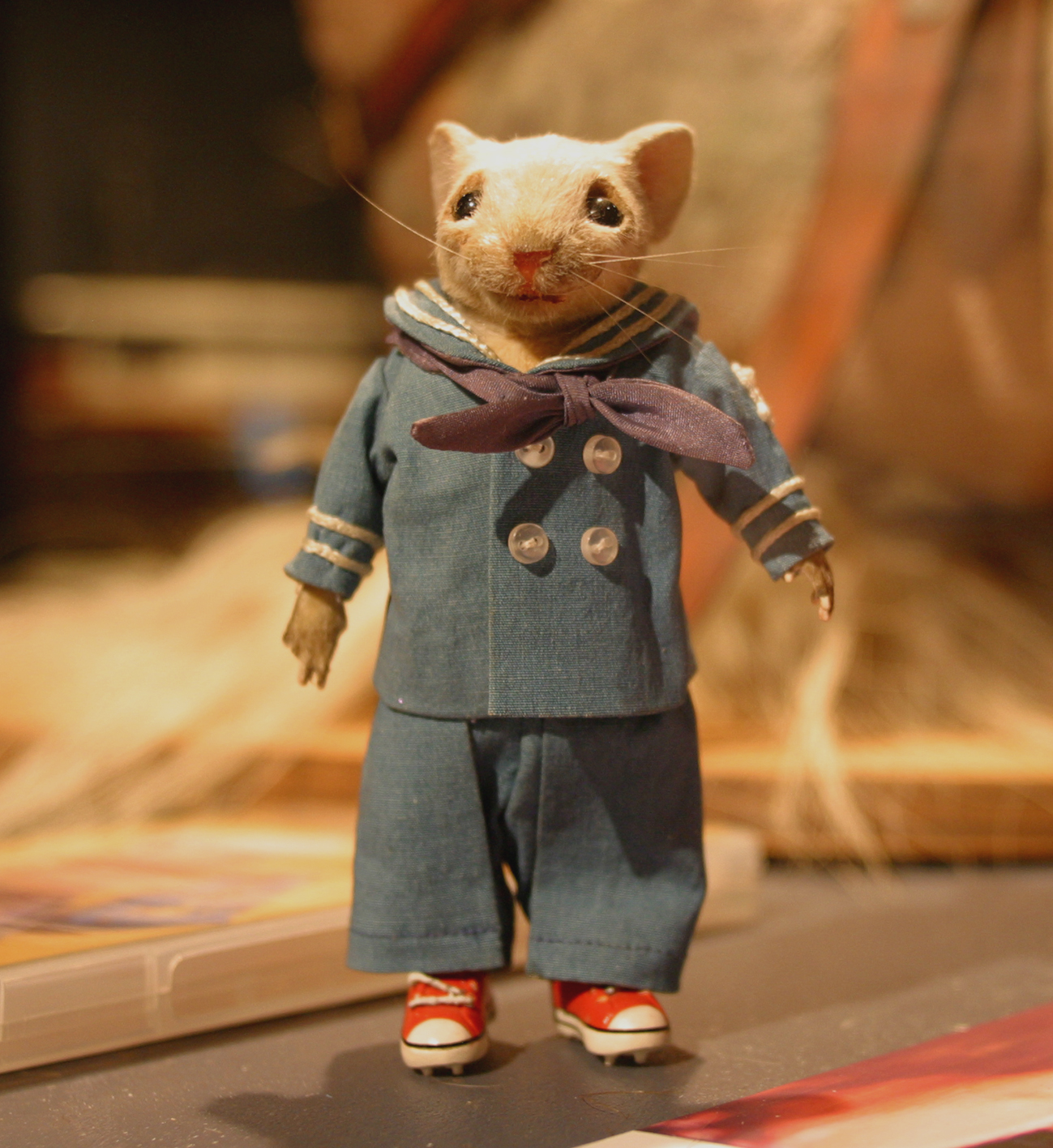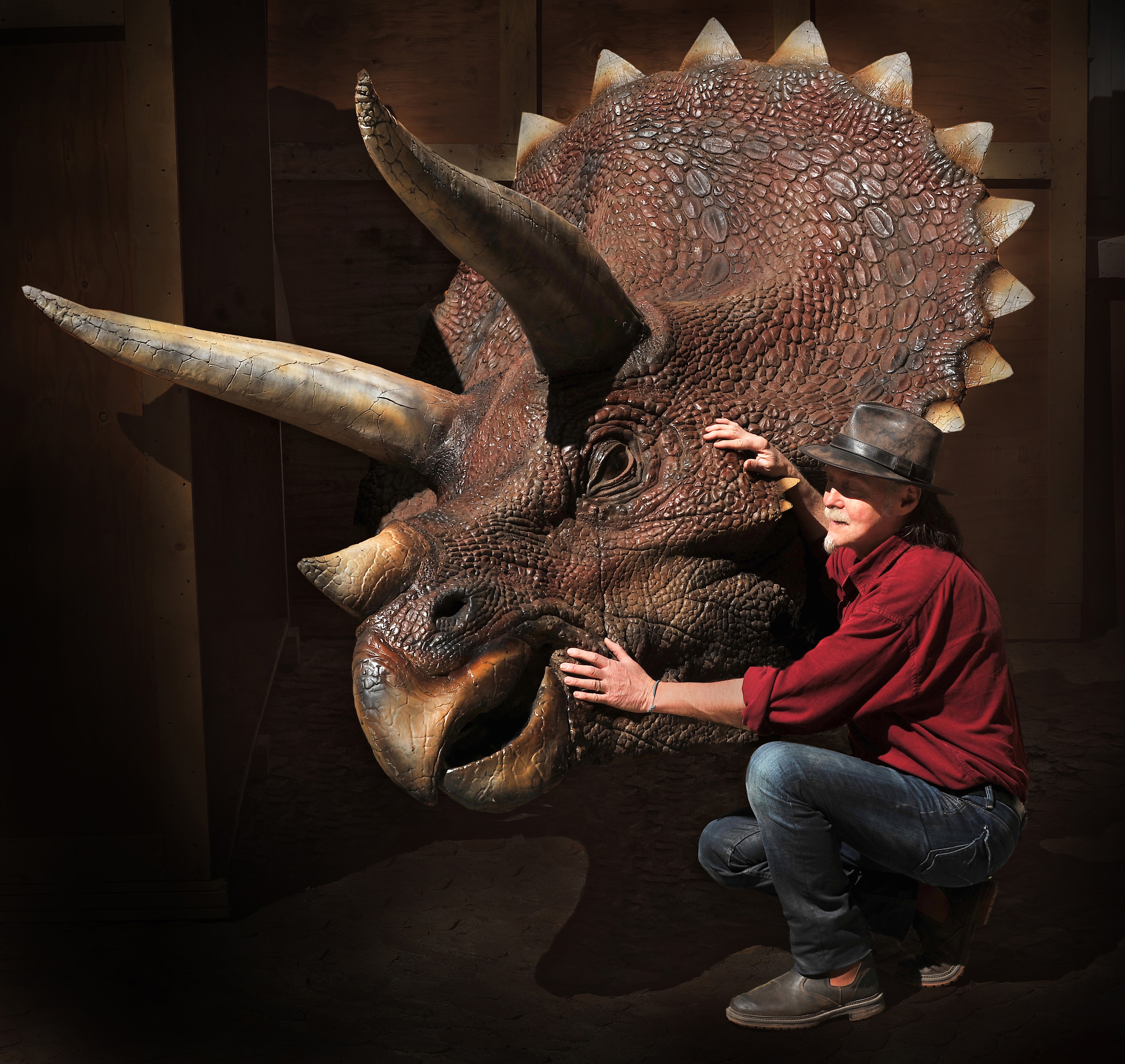Watch Parts Motorcycles by Dan Tanenbaum
| Facebook | Instagram | Twitter | Shop |
How did you first get started making miniature motorcycles in 2010? What was the inspiration?
 I was an Art Director in advertising back in the day, which I loved. Then I became a technology entrepreneur, starting tech companies and selling them. I just sold my last company in the gambling industry. I wanted a way to access my creative juices… I needed a way to use the creativity inside of me.
I was an Art Director in advertising back in the day, which I loved. Then I became a technology entrepreneur, starting tech companies and selling them. I just sold my last company in the gambling industry. I wanted a way to access my creative juices… I needed a way to use the creativity inside of me.
I’ve been a watch collector for about 20 years now. To me, a watch is the greatest miniature of all. The mechanisms that go into a watch… the design required to make these pieces so small… it’s extraordinary. I’m fascinated by the movements of a watch. After frequenting antique shows, watch dealers and flea markets for several years, I had amassed buckets of watch parts and antique watches.  At first, I began making cufflinks. I was selling these for a while, but in the end of the day, it wasn’t challenging enough for me. So I started playing around with watch parts.
At first, I began making cufflinks. I was selling these for a while, but in the end of the day, it wasn’t challenging enough for me. So I started playing around with watch parts.
The biggest piece of a watch is the case, so I worked backwards from that. I never want to manipulate a piece too much – that risks losing the integrity of the watch parts. I decided upon a motorcycle after putting two watch cases next to one another. As long as it has, handlebars, two wheels, an engine and a gas tank, it can be recognized as a motorcycle. Because so many motorcycles are custom designs, it allowed me to be very creative with these works.
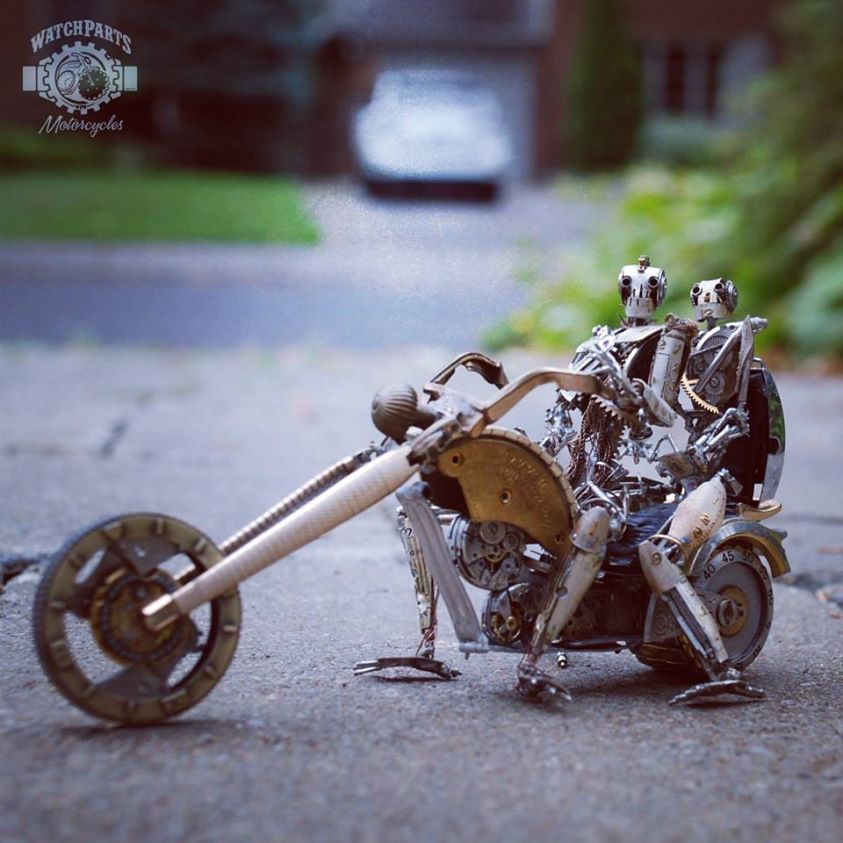 Soon after creating a few, I launched a Facebook page and received very helpful feedback from members of the motorcycle community. They’ve been a great group of people who have helped me to perfect this hobby and allowed me to work harder to create the best representation I can.
Soon after creating a few, I launched a Facebook page and received very helpful feedback from members of the motorcycle community. They’ve been a great group of people who have helped me to perfect this hobby and allowed me to work harder to create the best representation I can.
Did you transition immediately from watch parts cufflinks to Watch Parts Motorcycles?
It was a seamless transition. Sometimes I stray from motorcycles here and there. But for the most part, I’m obsessed with watch parts motorcycles. Every time I make one, it doesn’t look like the last one. I don’t want them to be an assembly line. So, I will research what’s happening in the moto world in order to decide what to make next. I’ve enjoyed making them as small as I can. And as big as 8 inches by 4 inches. I’m limited by the size of the watch case, which becomes the motorcycle wheel. For certain stop motion videos, I’ll incorporate a watch parts character made by a steampunk artist.
Do you only use watch parts in your creations?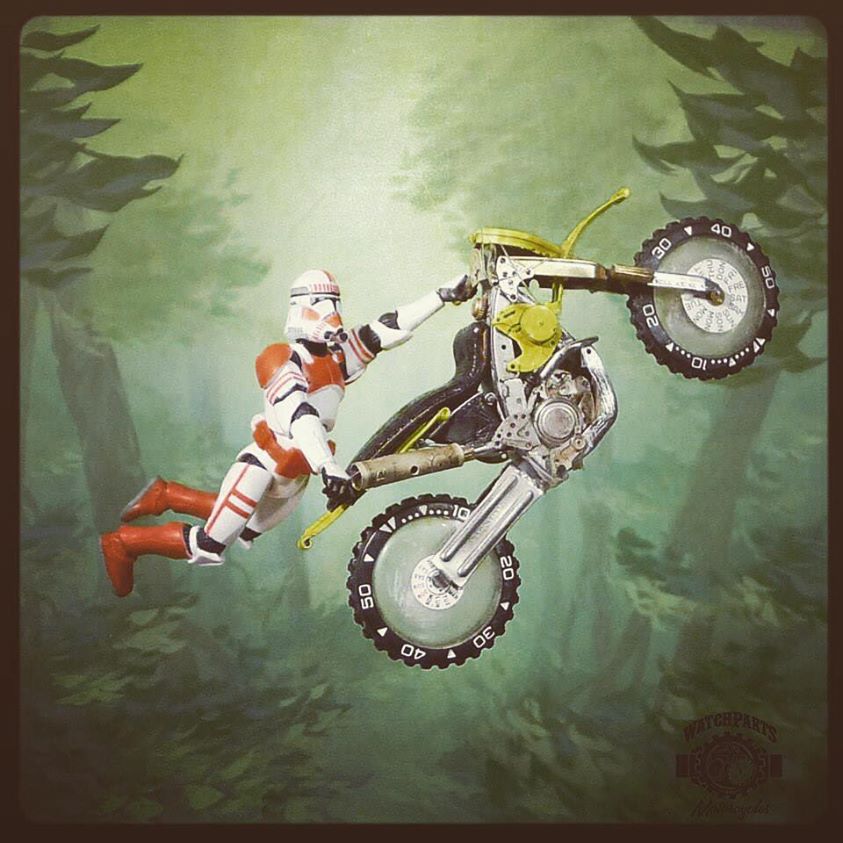
Yes, I only use watch parts when creating these motorcycles. For photoshoots or stop motion video projects, I will use miniatures as props when the scene calls for it.
What technique do you use to create your art?
The truth of the matter is that I don’t consider myself an artist. I was an Art Director. Not a sculptor. I use soldering glue for my watch parts motorcycles. The brand is Loctite glue.
Do you sell your Watch Parts Motorcycles?
The only pieces I sell are custom designs. Someone will send me a photo and I’ll work off of that. Those are the most stressful and challenging works for me, because I want to create the best representation of the bike. I only use watch parts, I never try to manipulate the pieces too much, always respecting the general shape of the mechanism or its parts.
Sometimes people have asked to send me a watch, but it’s not just one watch that goes into a motorcycle. Just the wheels alone are made from 4 different watch cases!
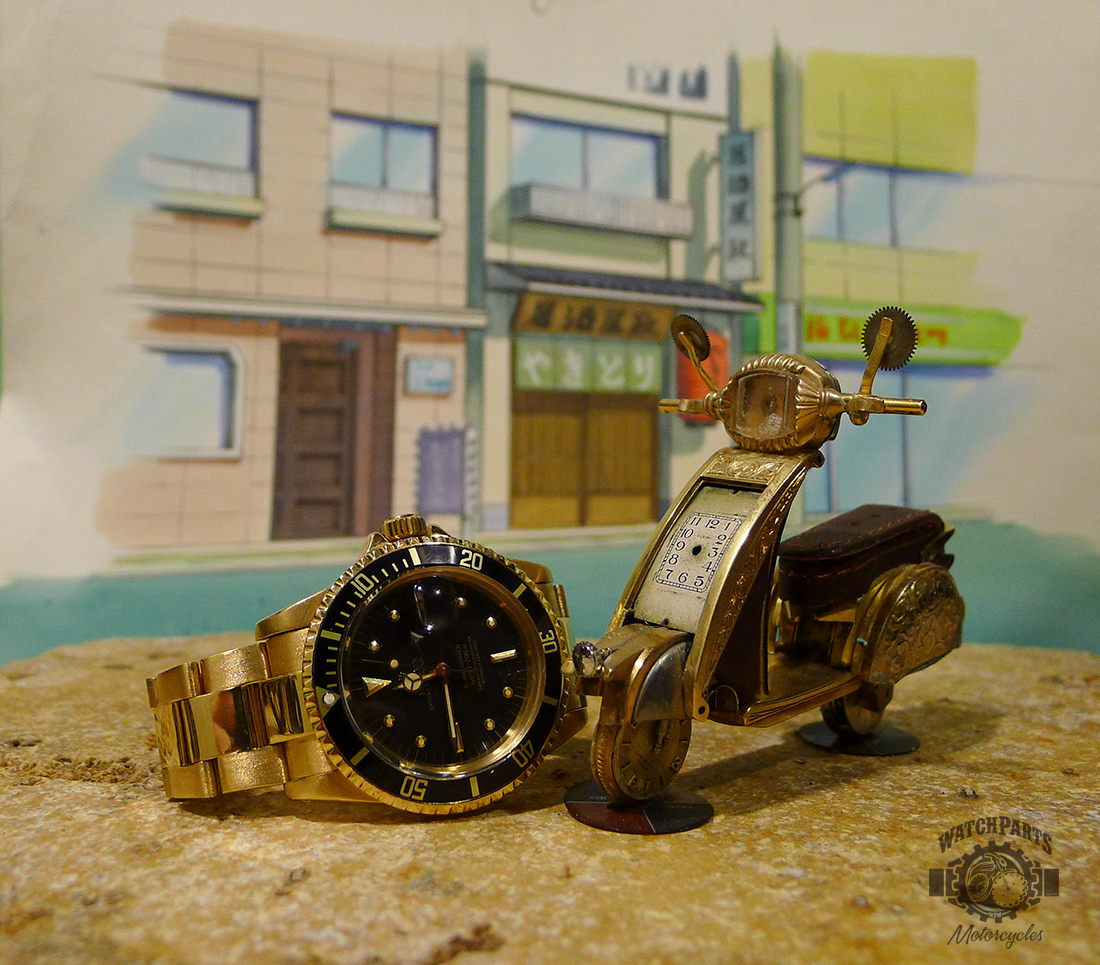 How many watches go into one Watch Parts Motorcycle?
How many watches go into one Watch Parts Motorcycle?
A motorcycle could have parts from 50 different watches in it! I don’t kill any watches in my creations. I breathe new life into an otherwise antique object.
What types of watches do you use in your Watch Parts Motorcycles?
I primarily use watches and pocket watches from the 1900s. Most of my collection stops around the 1940s or 1950s, around the Art Deco period.
How many Watch Parts Motorcycles have you made?
Since 2010, I’ve probably made about 150 of them. I’ve made bigger ones and smaller ones. The more miniature ones are roughly about 1 inch by ½ inch. I’ve probably made about 75 bigger motorcycles.
Where do you keep all the miniature motorcycles you’ve designed and built?
My workroom is in my furnace room. With three young children, a full time job, and this passion, I don’t sleep very much. So, I’m usually in my workroom by 11 at night and I spend a few hours in there, depending on the type of watch parts motorcycle I’m currently working on.
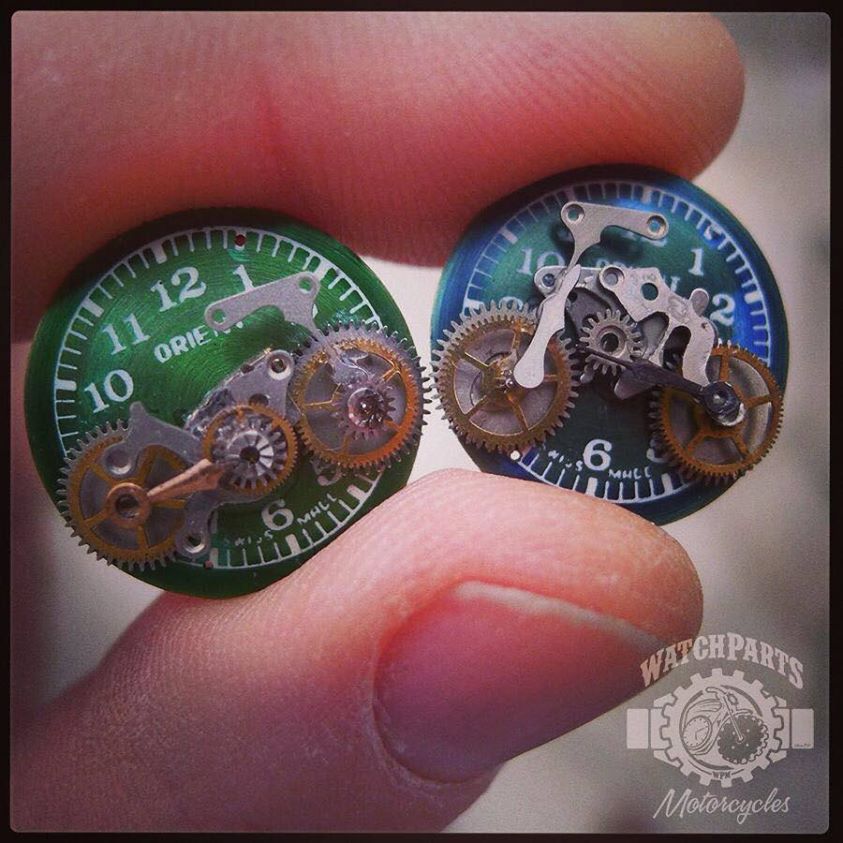 How long does it take you to create a Watch Parts Motorcycle?
How long does it take you to create a Watch Parts Motorcycle?
The smaller pieces are akin to doodles, and only take about 2 or 3 hours to make. I work on these because I need to get the creativity out of my system somehow. As for the bigger ones, these take about 50 hours to design and build.
How would you describe your work?
My work appeals to a very different cross section of people. You have motorcycle fans, watch lovers, steampunk enthusiasts, those that appreciate art, and another group that loves miniatures.
Can you describe the process behind your photoshoots?
I absolutely love using perspective in my photoshoots of my watch parts motorcycles. I’ll browse online until a particular miniature or collectible catches my attention and then I will use it in one of my photos. There’s also a great miniatures store in Toronto, The Little Dollhouse Company, that I’ve been to a few times when I’ve needed a prop. Whether a canoe, ladder, wine glass or otherwise, I’ve been fortunate enough to find it in miniature and use it for a watch parts motorcycle photoshoot. I recently purchased a miniature carry-on bag from Pat Tyler. And I also picked up an amazingly intricate guitar for another shoot.
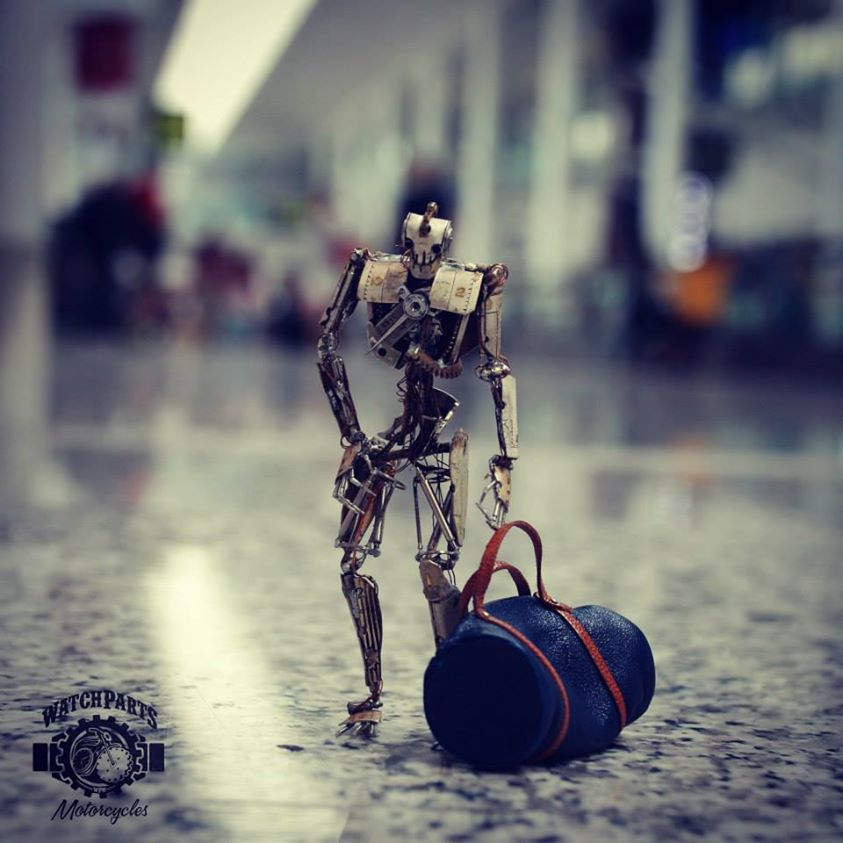 Most often, I’m not looking for a particular prop, I’m looking for something that catches my attention. I immediately start thinking of the story behind a miniature. And I then start thinking of all the stories I could tell with that miniature. That’s the greatest thing about people making miniatures. Miniaturists are helping other people tell stories. So it’s great to have access into this community. The miniature world truly takes storytelling to the next level.
Most often, I’m not looking for a particular prop, I’m looking for something that catches my attention. I immediately start thinking of the story behind a miniature. And I then start thinking of all the stories I could tell with that miniature. That’s the greatest thing about people making miniatures. Miniaturists are helping other people tell stories. So it’s great to have access into this community. The miniature world truly takes storytelling to the next level.
Do you have a few favorite miniaturists?
I love work in the eye of a needle. Those micro miniatures are astonishing. I also love the carved sculptures of Dalton Ghetti. I enjoy dioramas that use very small train figures. One Toronto artist, TALWST, is doing a nice job with these. Whenever the viewer loses the perspective of a miniature, you have to admire the work that photographers are doing.
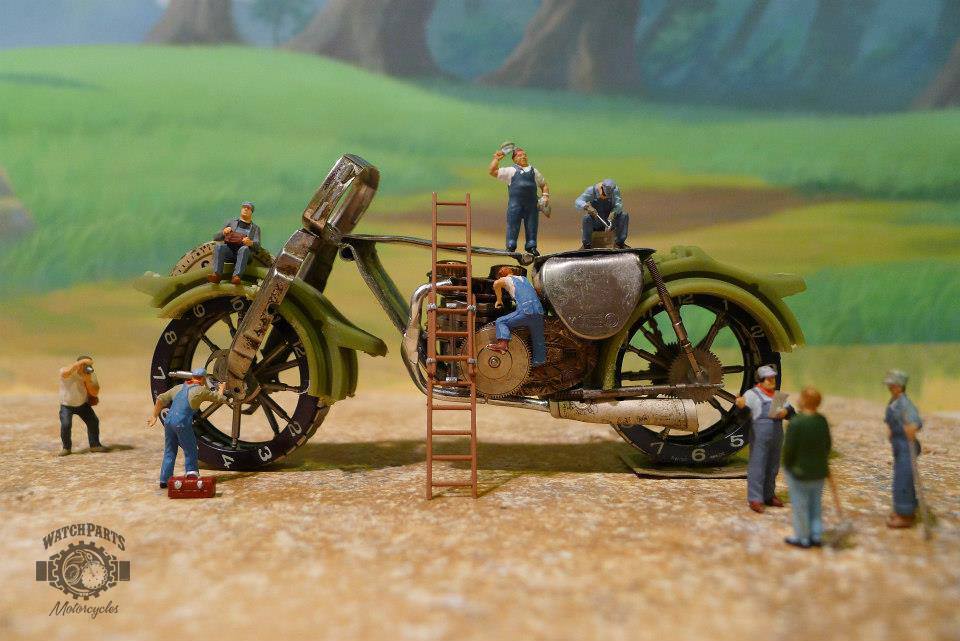 I once picked up 100 miniature figurines and worked on dioramas with my children. They really ran with the project and created the own. It was a great way for them to express themselves, just using a bowl filled with dirt and moss. In fact, my daughter has even built a few watch parts motorcycles! She’s done an amazing job. I think the perspective really comes naturally – it’s all about the placement of the wheels in relation to the handlebars and the engine.
I once picked up 100 miniature figurines and worked on dioramas with my children. They really ran with the project and created the own. It was a great way for them to express themselves, just using a bowl filled with dirt and moss. In fact, my daughter has even built a few watch parts motorcycles! She’s done an amazing job. I think the perspective really comes naturally – it’s all about the placement of the wheels in relation to the handlebars and the engine.
What’s your favorite watch parts motorcycle you’ve built?
I’d say the Triumph Bonneville. It’s the first piece I made that got really intricate in the design and build. I always want my work to be the best representative of the motorcycle. I enjoy making existing, popular motorcycles and hate to select a favorite most days.
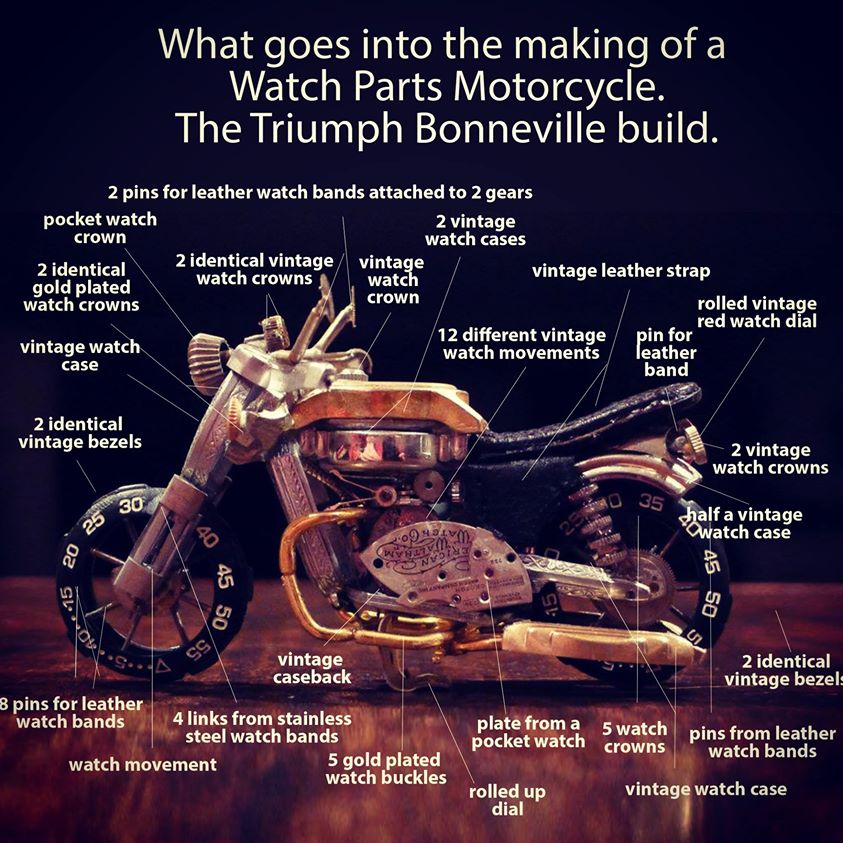
I collect many different things these days. I’m an art collector, and I collect watches but don’t have a favorite watch. I try not to do that with most of my endeavors. I don’t want to reach a turning point in my work where I only focus on one type of motorcycle. That being said, I have started liking café racers a lot. I love their visual simplicity, vintage feel, and their quintessential gas tank design. So, I’ve been trying to find pieces for café racers recently. Perhaps I’ll dabble in crotch rockets and dirt bikes at some point, but I won’t want to manipulate the watch parts beyond reason. I don’t want to lose the feel of the watch parts.
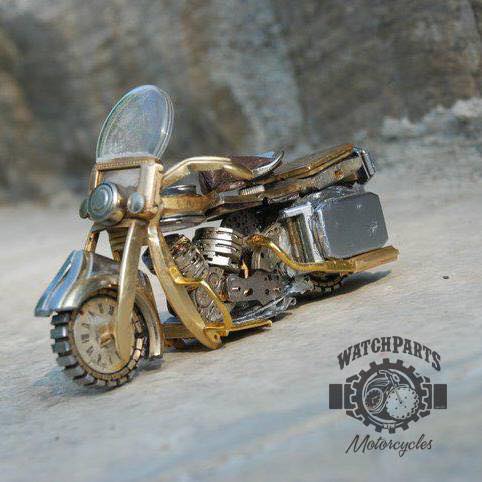 Do you ever work on multiple pieces at once?
Do you ever work on multiple pieces at once?
I like to work on one piece at a time. If I’m working on two pieces at once, it feels too much like an assembly line.
I never complete a large bike in one sitting. Sometimes I have to walk away, put the work aside, and start something else. Eventually, I’ll come back to it. If I’m too close to a project, then I’ll need to take off a few months.
Advice for beginner artists?
If you’re going to do art, you have to do it for yourself. It absolutely has to come from yourself. Art must be an expression of what you’re feeling, or what you want other people to feel. It should cause you to emote from within. Art should be a representation of your creative spirit. You cannot do art for anyone else. Put your own spin on things – whether art, business, marriage, or anything else. Express your individuality. That’s important in whatever you do. Don’t try to be anyone else. And lastly, be spontaneous with your art.
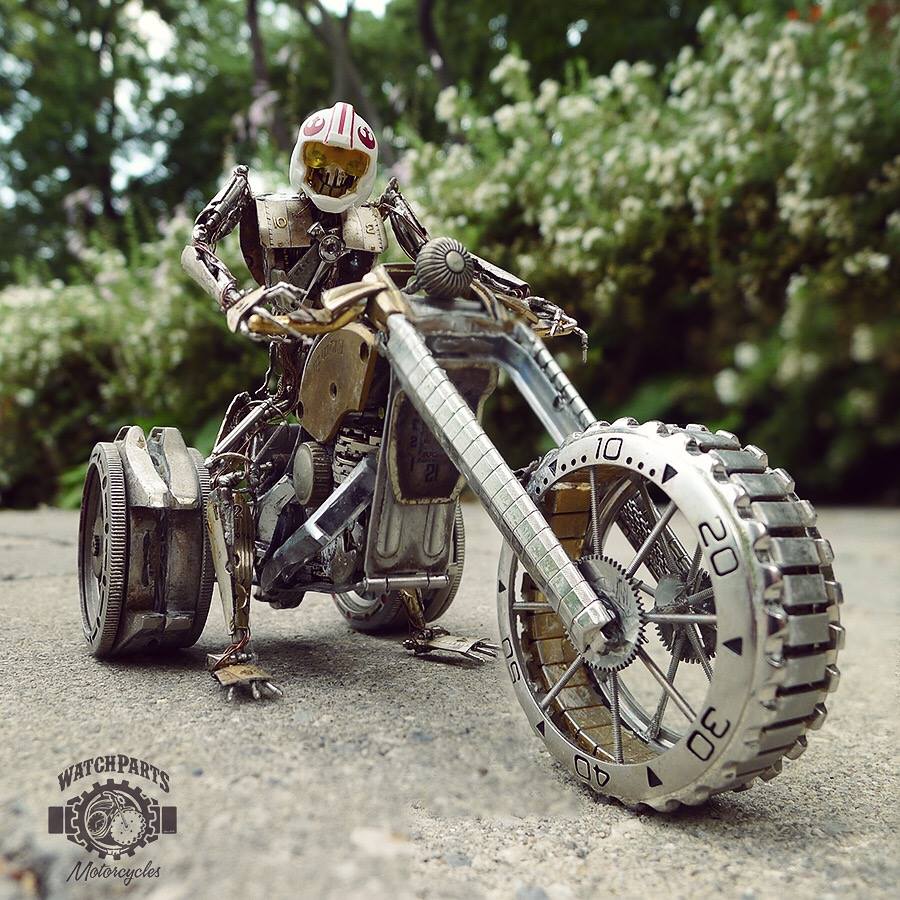 What’s to come from Watch Parts Motorcycles?
What’s to come from Watch Parts Motorcycles?
I’ll soon begin work on a custom order for a Honda CBX 1000 out of watch parts. I build most of the pieces in my head first. Once it’s about 70% done in my head, I’ll begin executing it.
Anything else you would like to add? What’s to come from Watch Parts Motorcycles?
More stop motion videos, definitely! I am planning to dedicate more time to these projects and dive into stop motion animation. I’d love to make videos that are more than 15 seconds long. Until motorcycles become non-challenging or boring, I’ll continue to work on these sculptures.
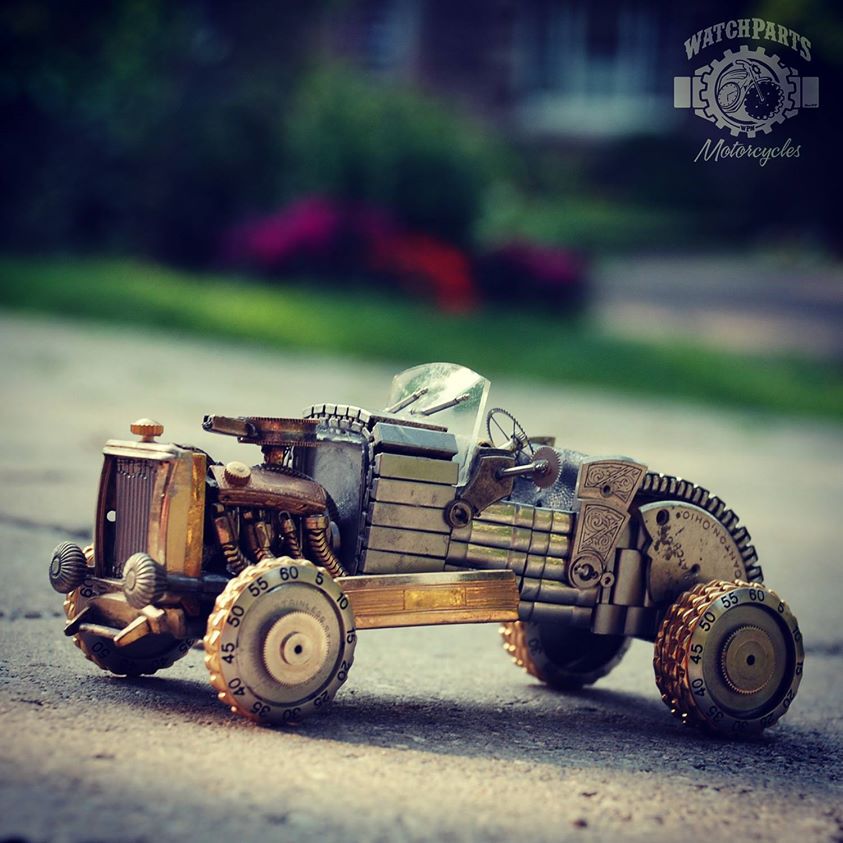 What do you want miniature fans and motorcycle enthusiasts to know about you?
What do you want miniature fans and motorcycle enthusiasts to know about you?
I love the community of miniatures and miniature artists. At first, it felt like a part of the brain I don’t have, but I guess I fit into that category. I absolutely love seeing the non-typical, creative ideas out there in the miniature world.
Now I believe that the more creative the miniature, the better the imagination of the recipient becomes. Miniatures are allowing us to become more creative. And my Watch Parts Motorcycles project is something I’m passionate about and I love. It’s totally different from my day job and it’s proven to be a great way to meet new people in the art, motorcycle and miniature worlds.
Dan Tanenbaum, creator of Watch Parts Motorcycles, is based in Toronto. You can follow his miniature motorcycle adventures on Facebook, Instagram or Twitter. Shop the Watch Parts Motorcycles collection online.
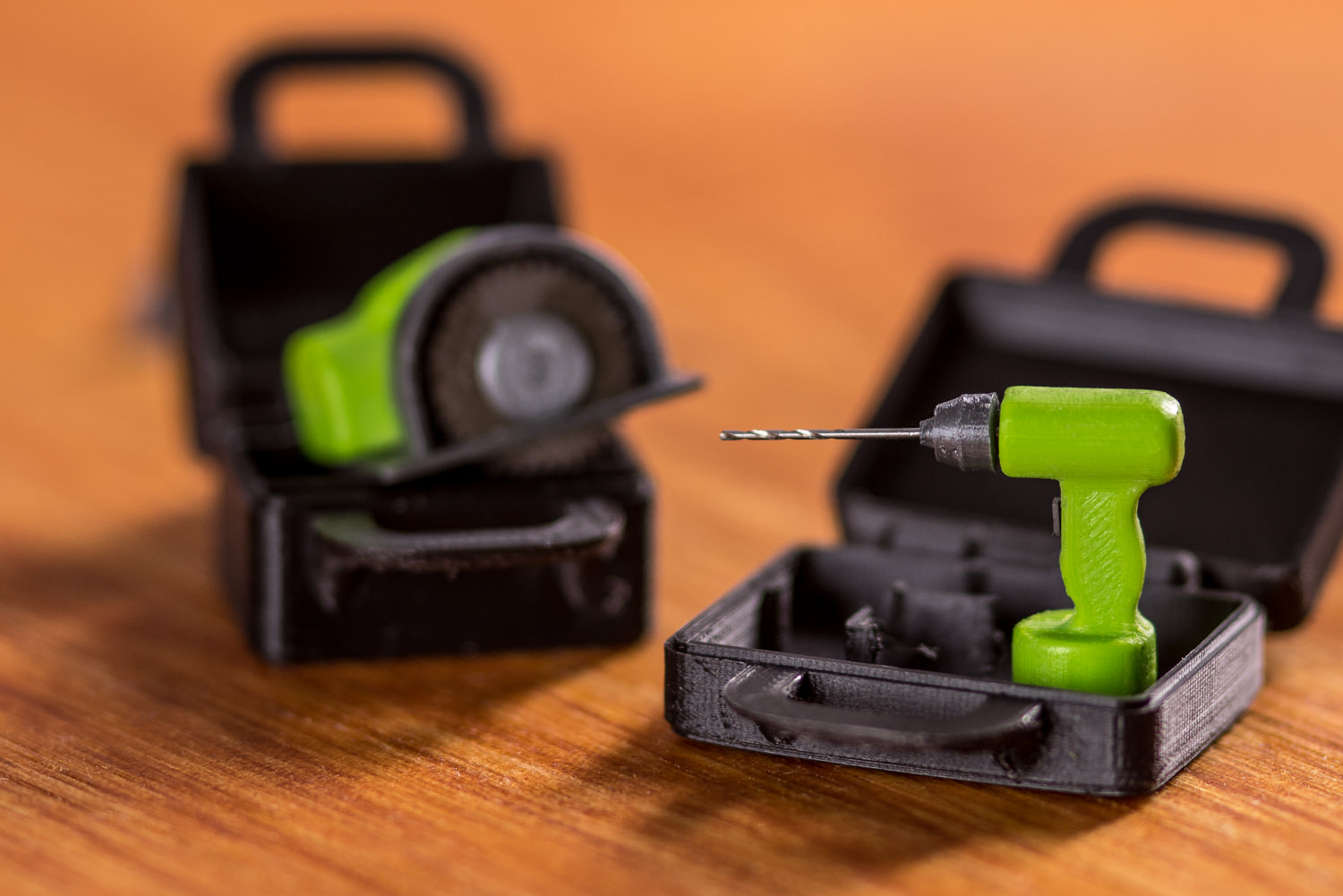 Tell us a bit about the conception of The World’s Smallest Circular Saw.
Tell us a bit about the conception of The World’s Smallest Circular Saw. 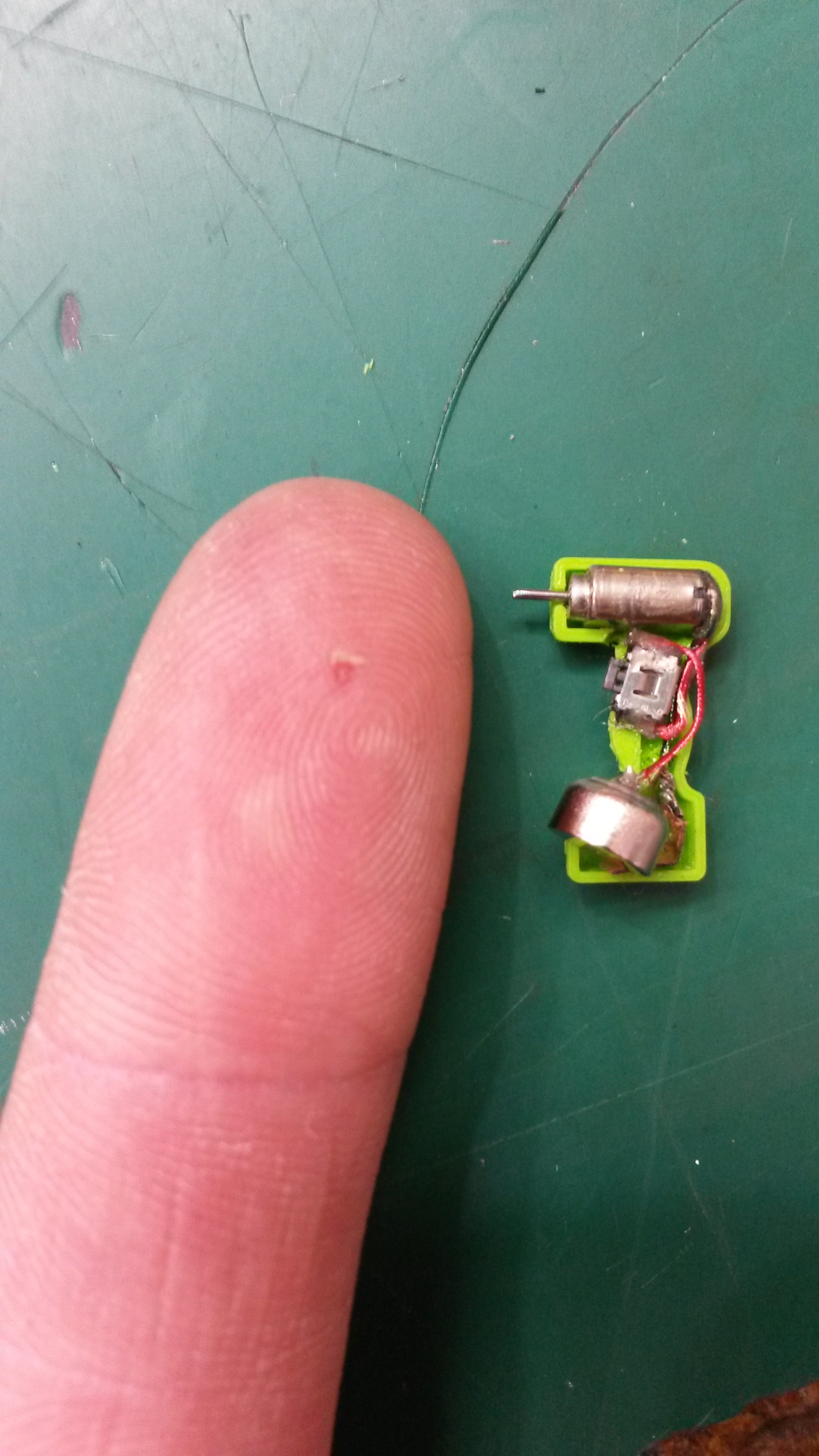 Approximately how long did it take you to create the saw and drill?
Approximately how long did it take you to create the saw and drill? 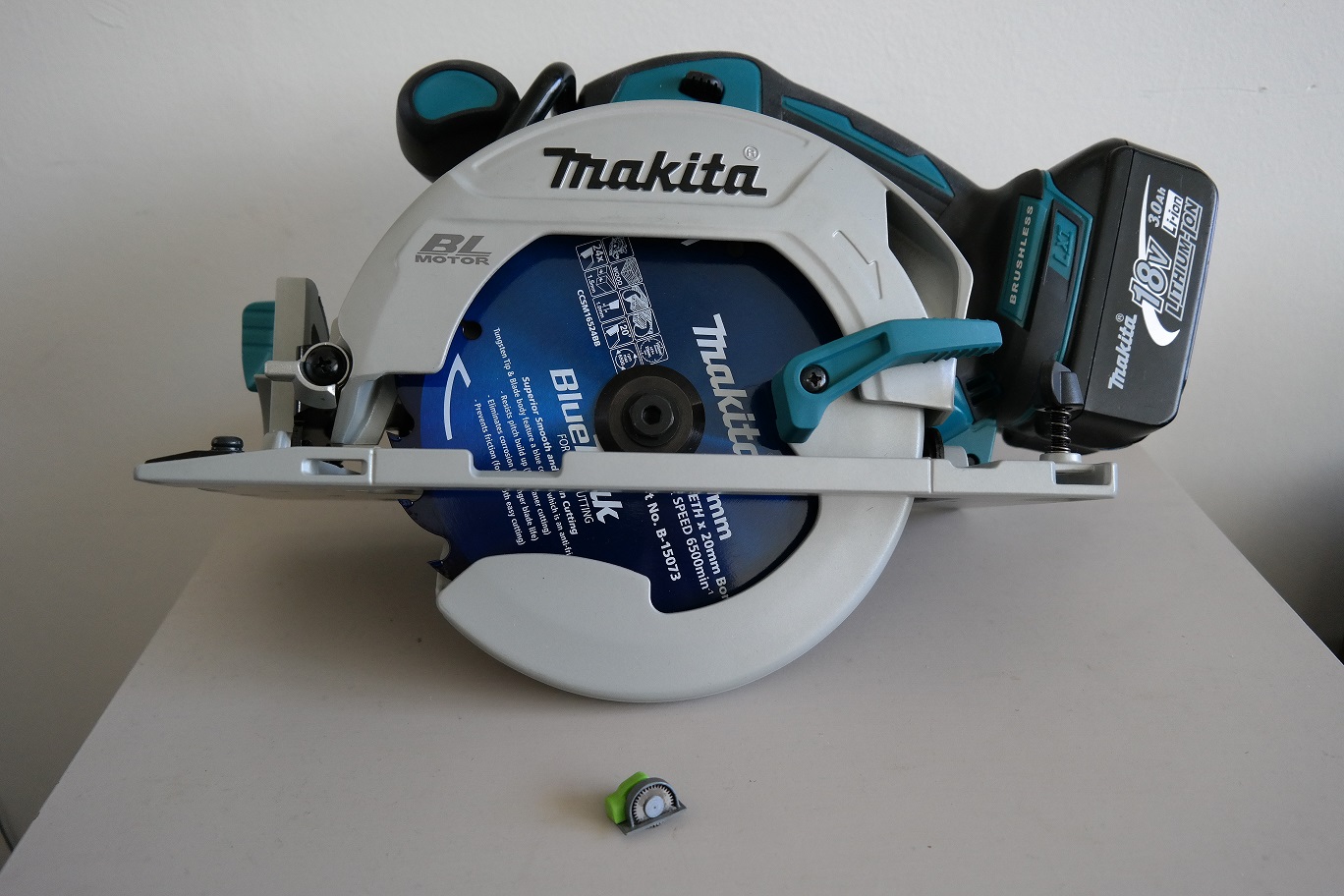
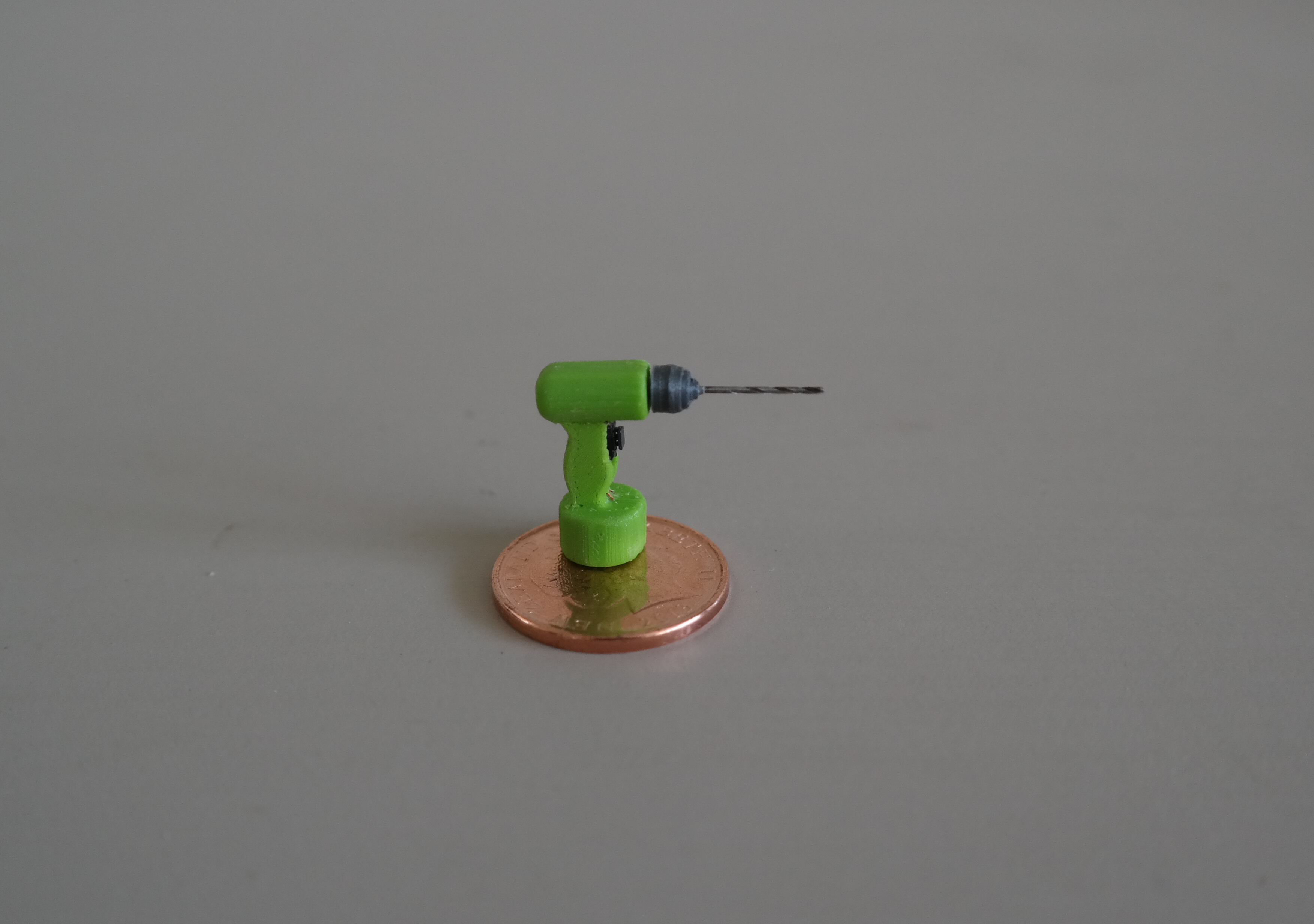 Seeing people struggle operating or working with equipment and coming up with improvements to aid their jobs and improve overall performance.
Seeing people struggle operating or working with equipment and coming up with improvements to aid their jobs and improve overall performance.
